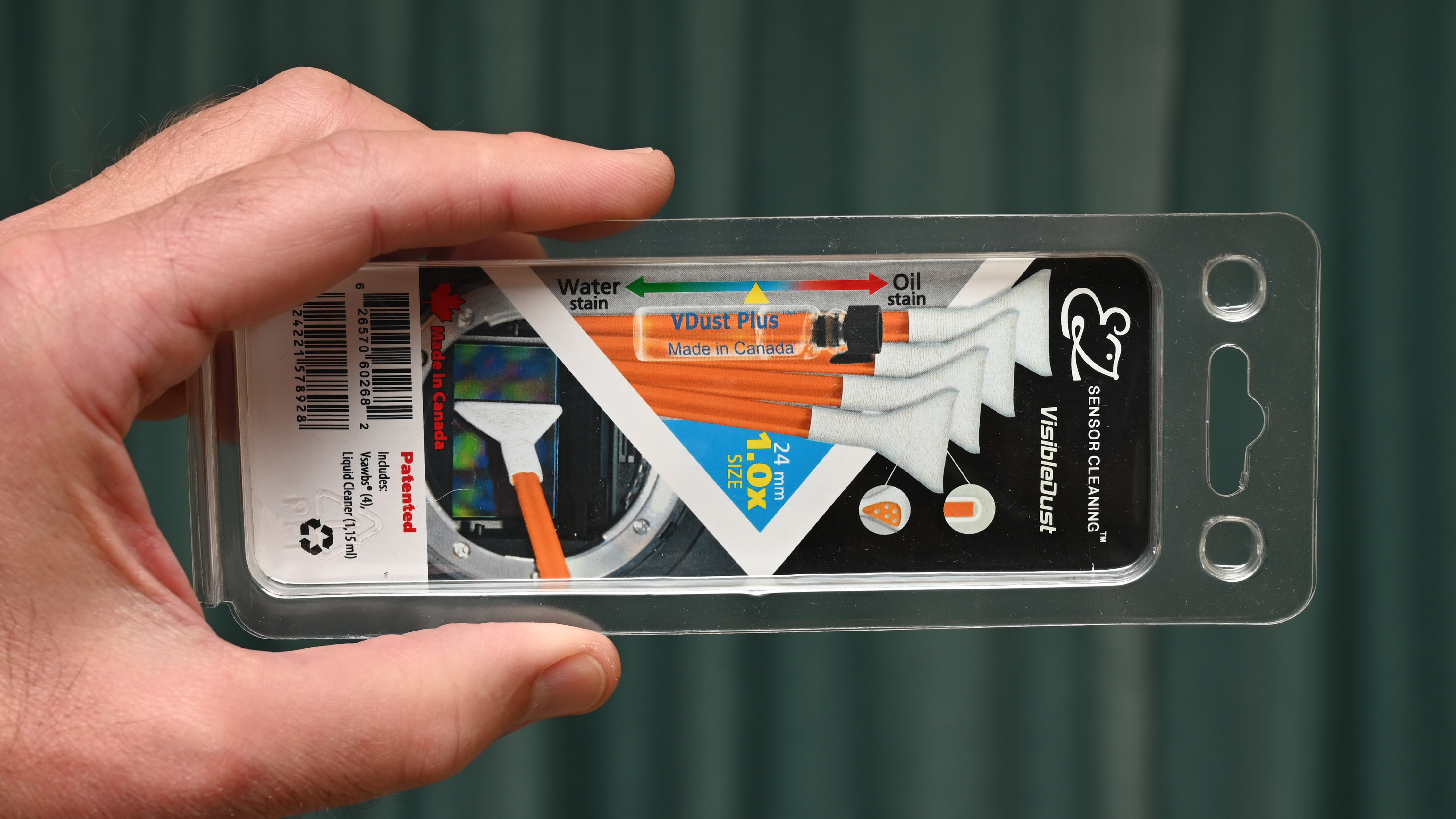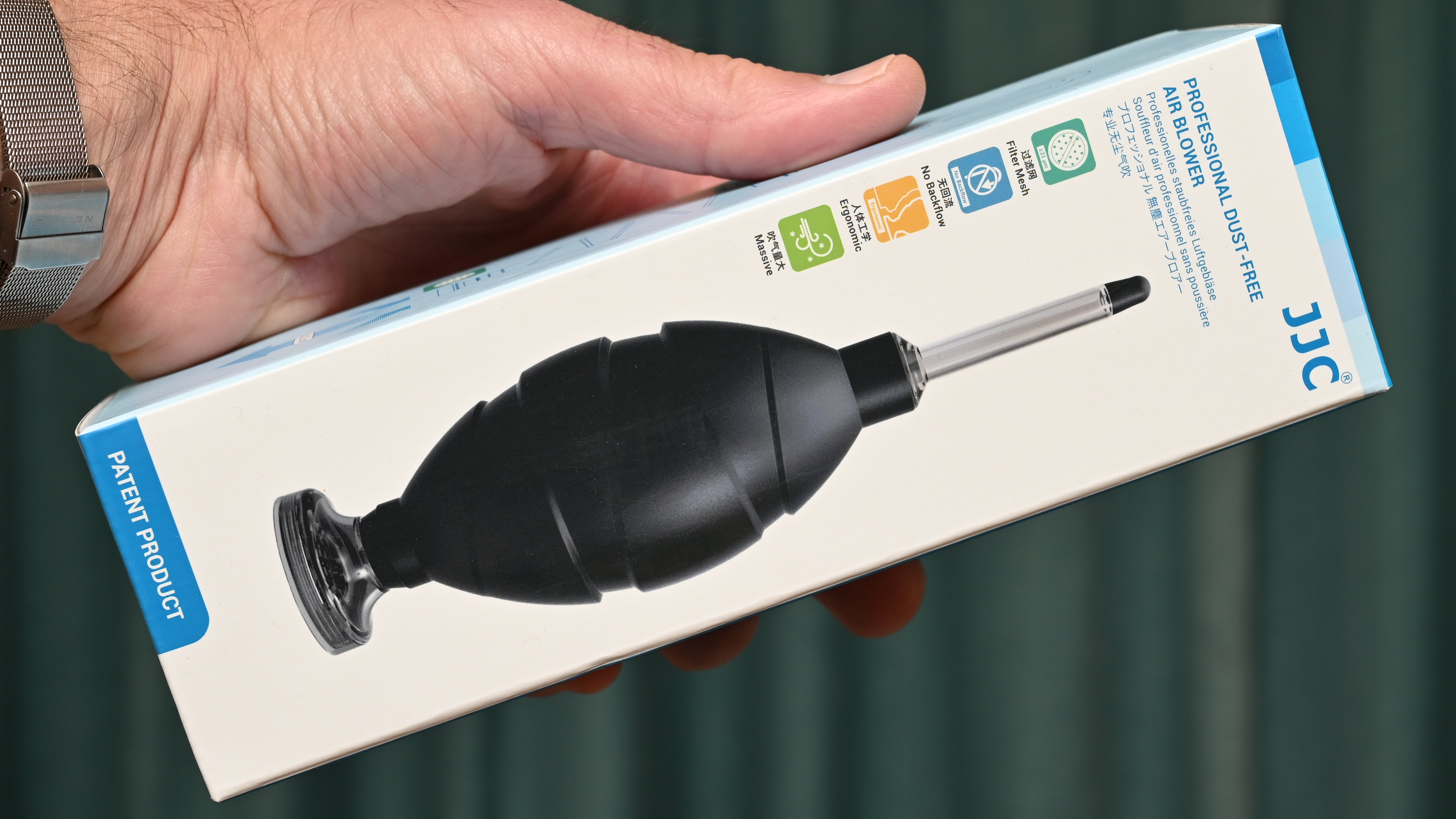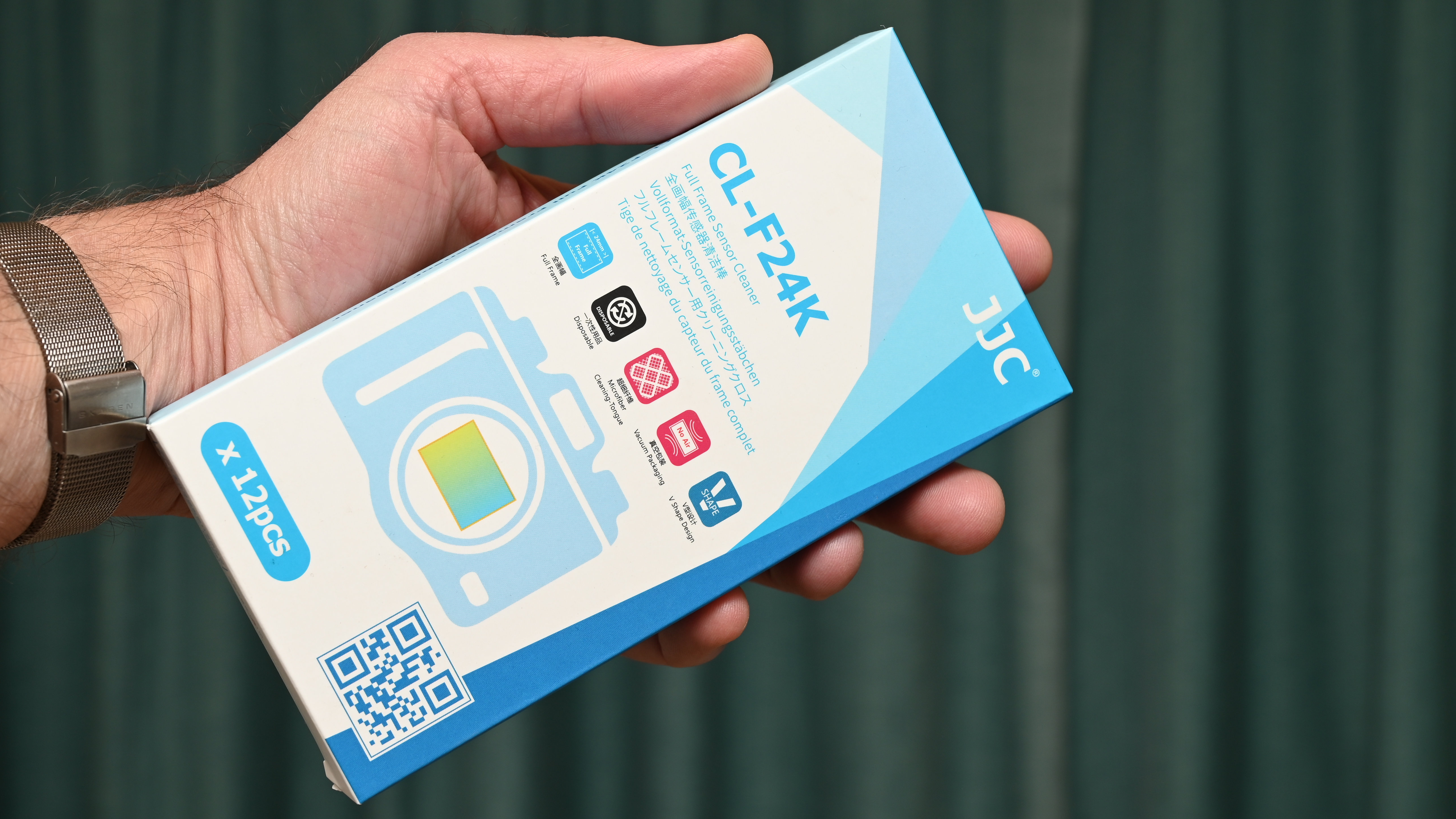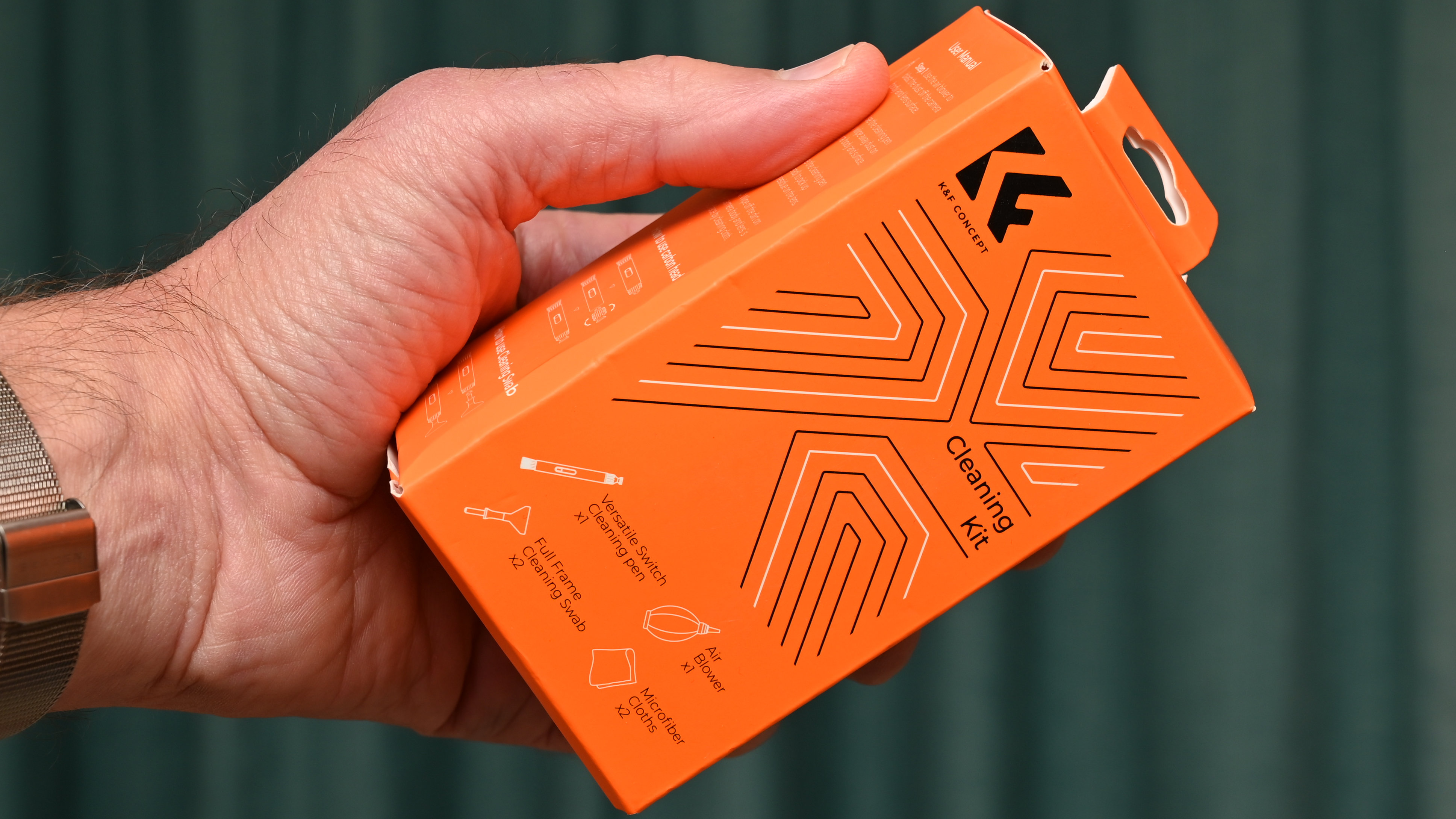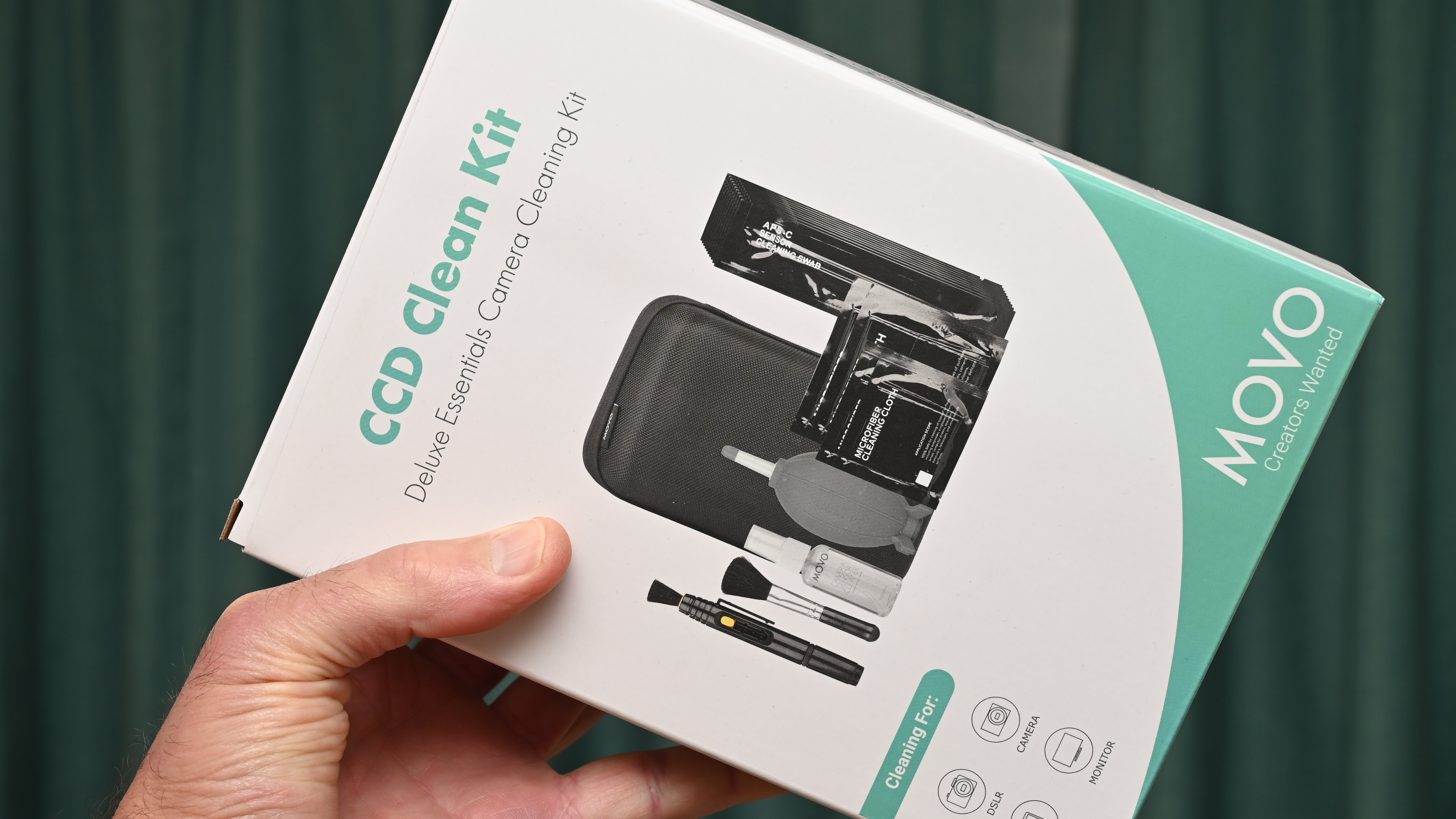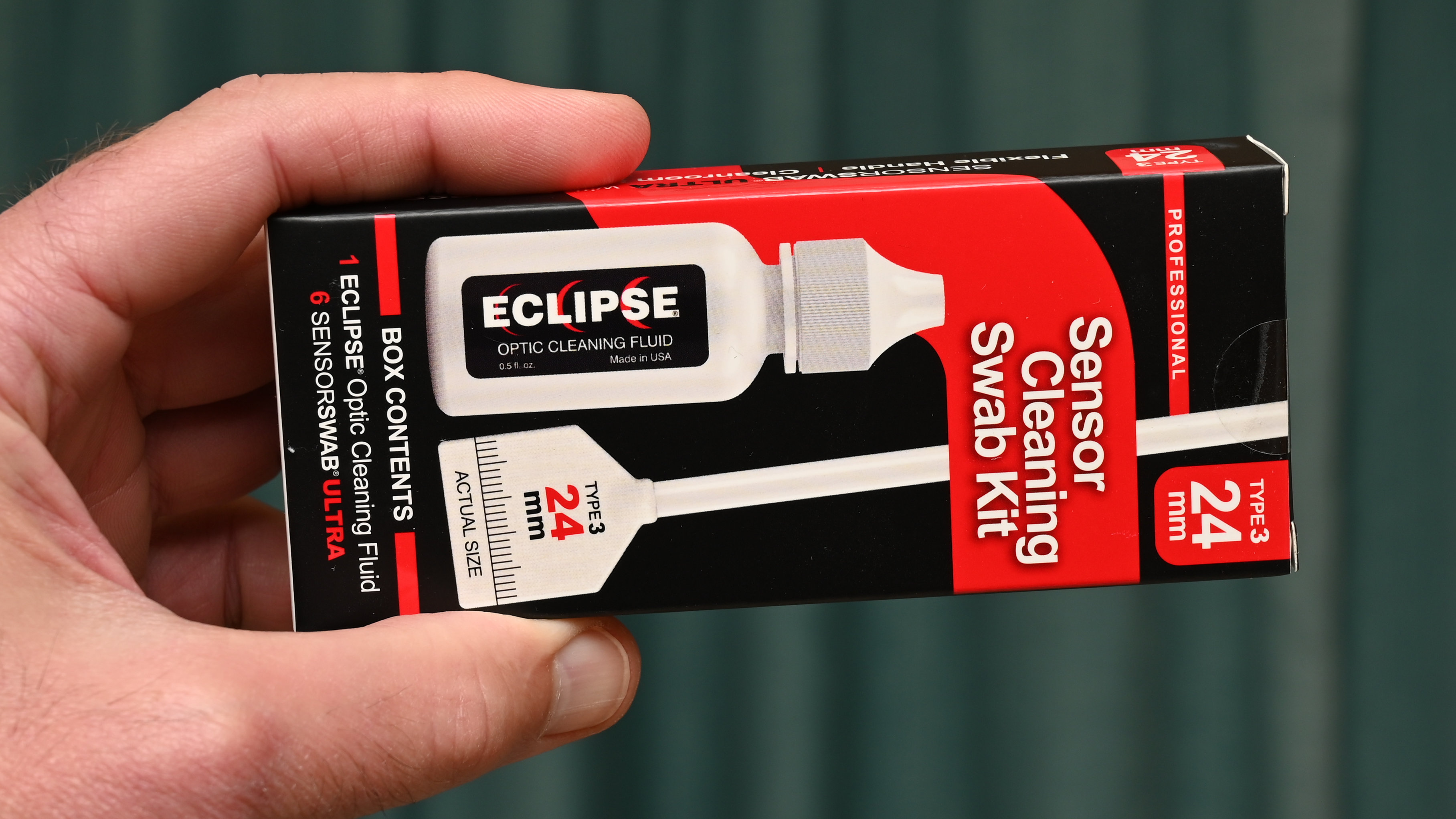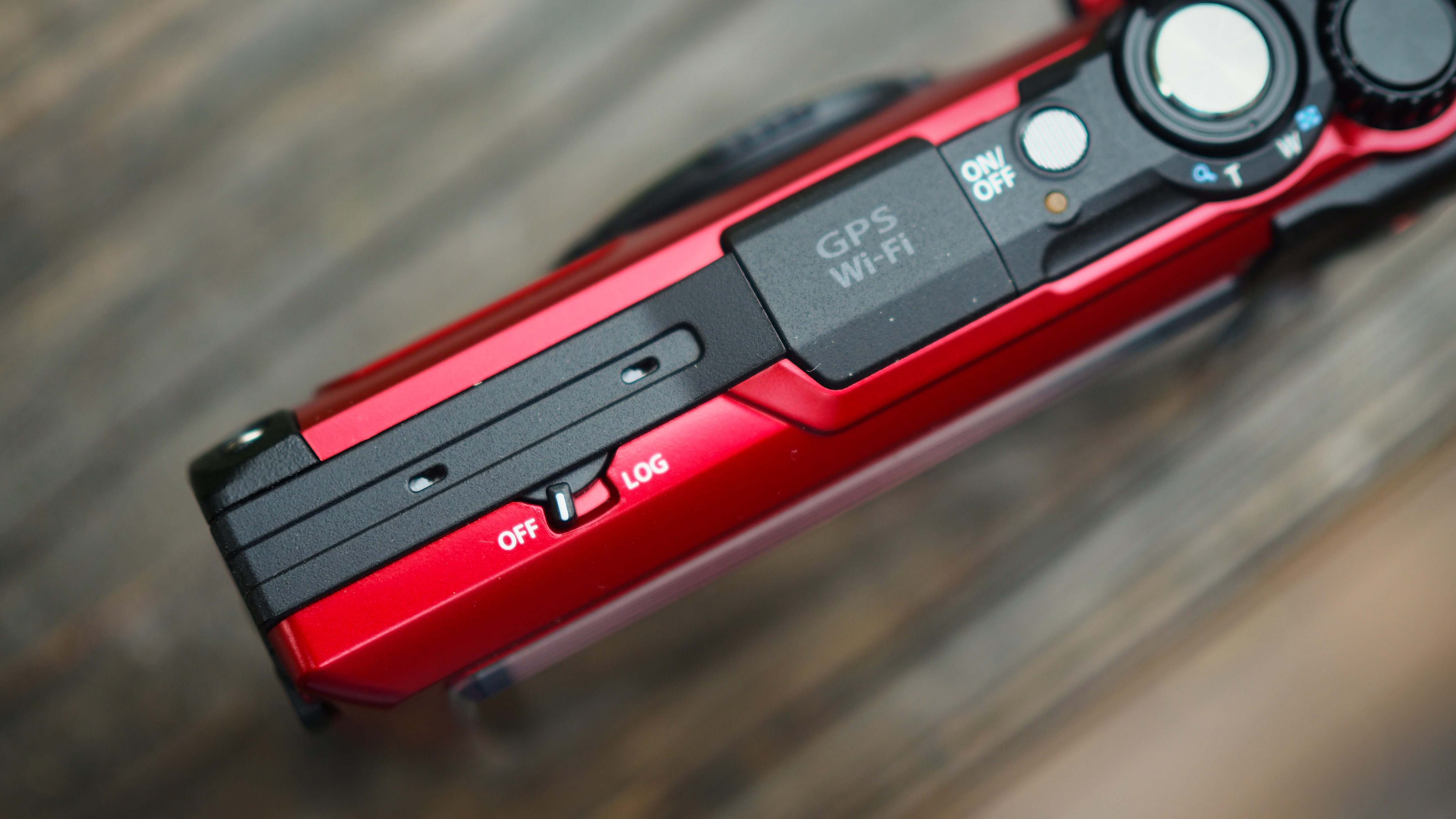The best camera sensor cleaner: these kits will banish dark spots from your photos
These top camera sensor cleaner kits are just the job for mirrorless cameras and DSLRs
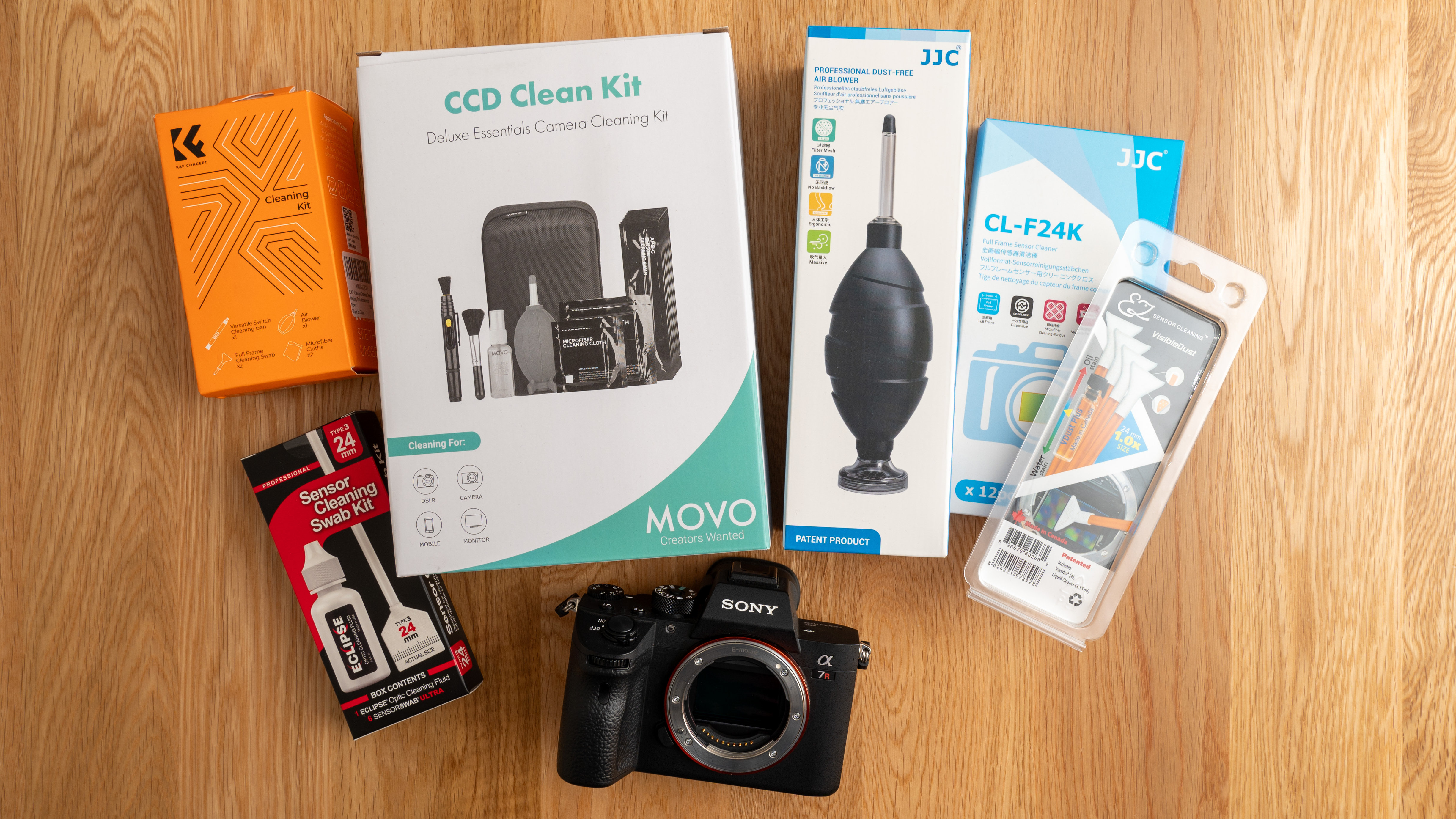
Digital photography is a very clean process. If you’ve ever made prints from film, you’re probably well aware of just how long, painstaking, and tedious the process of ‘spotting’ them. But there’s a counter-productive flipside when going from analog to digital. If there’s dust on your digital camera’s image sensor, it’s likely to stay put. That can result in dark spots in the same place on every successive shot.
Dust can be ingested into your camera every time you zoom in and out with a zoom lens that physically extends and contracts, more especially when you swap between different lenses on the camera body. Murphy’s Law states that the dust will end up just where you don’t want it - on your image sensor.
To check for dust, it’s best to zoom to your lens’s longest focal length (if you’re using a zoom lens), select a narrow aperture of around f/16 or f/22, focus at infinity, and take a few shots of a clear blue sky, or even a plain white wall or sheet of paper. If you have dark spots in the same place on successive images, you’ve likely got dust on your image sensor.
Many cameras these days have sensor cleaning routines. That helps up to a point, but stubborn specs of dust, other particles of muck, droplets of oil, or smears can be harder to shift. A simple air blower might be all that’s needed to shift dust particles, but you might need to use a more thorough cleaning process like a specialist swab for either a dry or ‘wet clean’ the latter involving fluid in conjunction with a swab.
The image sensor of your camera is a very delicate thing so if you’re not entirely confident to clean it yourself, you can follow our guide to how to clean a camera sensor, or it’s wise to pay for a professional service. However, there are some good cleaning kits on the market that, used with care, can empower you to do the job yourself. Here are our top picks, and click below for our tutorial on how to clean a camera’s image sensor.

Matthew Richards is a photographer and journalist who has spent years using and reviewing all manner of photo gear. He is Digital Camera World's principal lens reviewer – and has tested more primes and zooms than most people have had hot dinners! His expertise with equipment doesn’t end there, though. He is also an encyclopedia when it comes to all manner of cameras, camera holsters and bags, flashguns, tripods and heads, printers, papers and inks, and just about anything imaging-related. In an earlier life he was a broadcast engineer at the BBC, as well as a former editor of PC Guide magazine.
The Quick List
Here's a quick rundown of all the cleaning kits in this guide. Scroll down for a more in-depth look at the individual products.

One of the biggest and longest-established names in the image sensor cleaning business, VisibleDust makes a wide range of kits and accessories in Canada. Our top choice is this kit that tackles everything from specs of dust to stubborn stains.
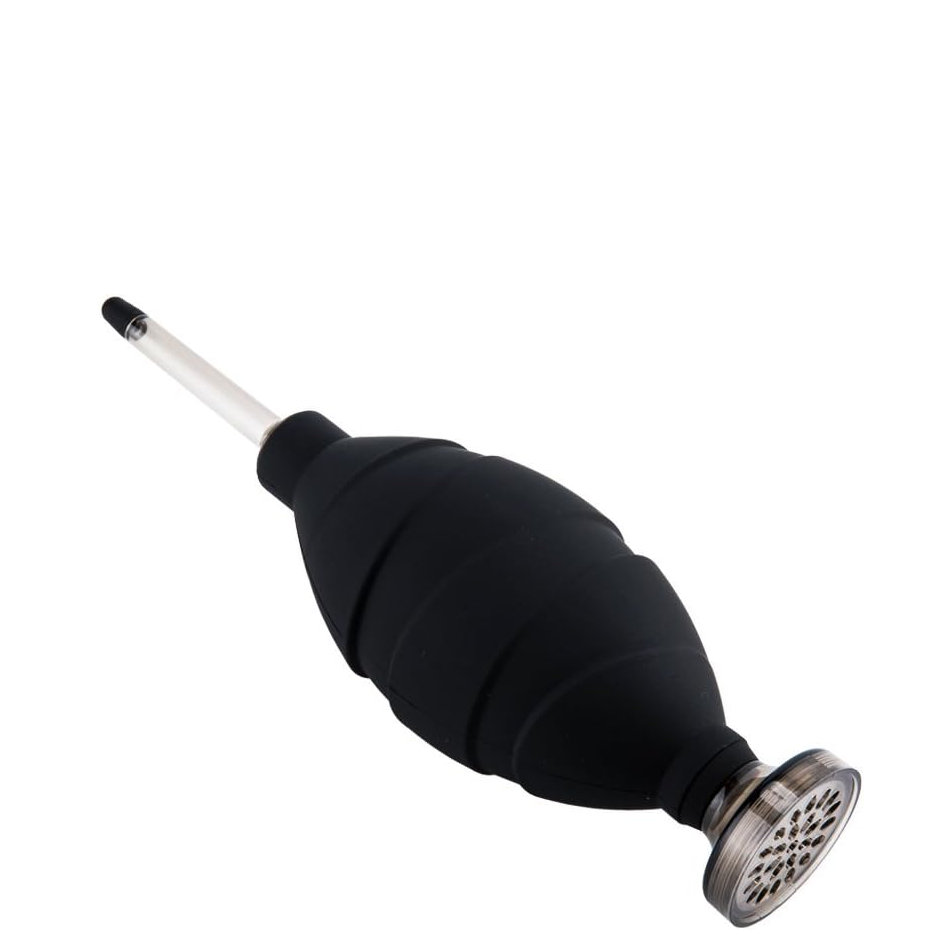
Sometimes an air blower is all you need to shift dust particles from your image sensor. But naturally, you don’t want to blow more dust onto your sensor than you’re actually removing. This blower features a built-in filter to keep the airflow clean.
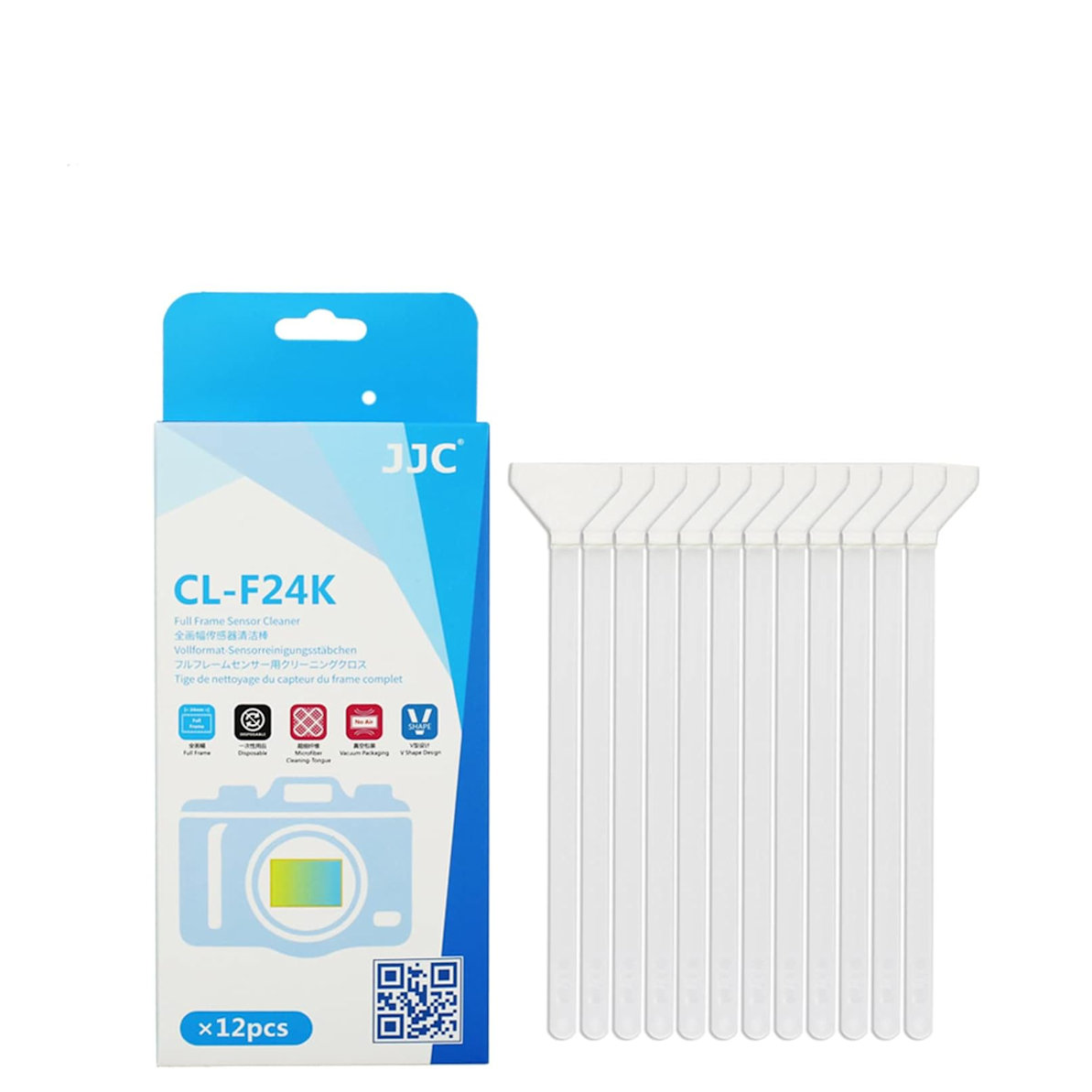
Filling the gab between an air blower and a full wet cleaning solution, these dry swabs from JJC make short work of clearing away contaminating particles that you can’t shift with a blower alone, and they’re good value for money.
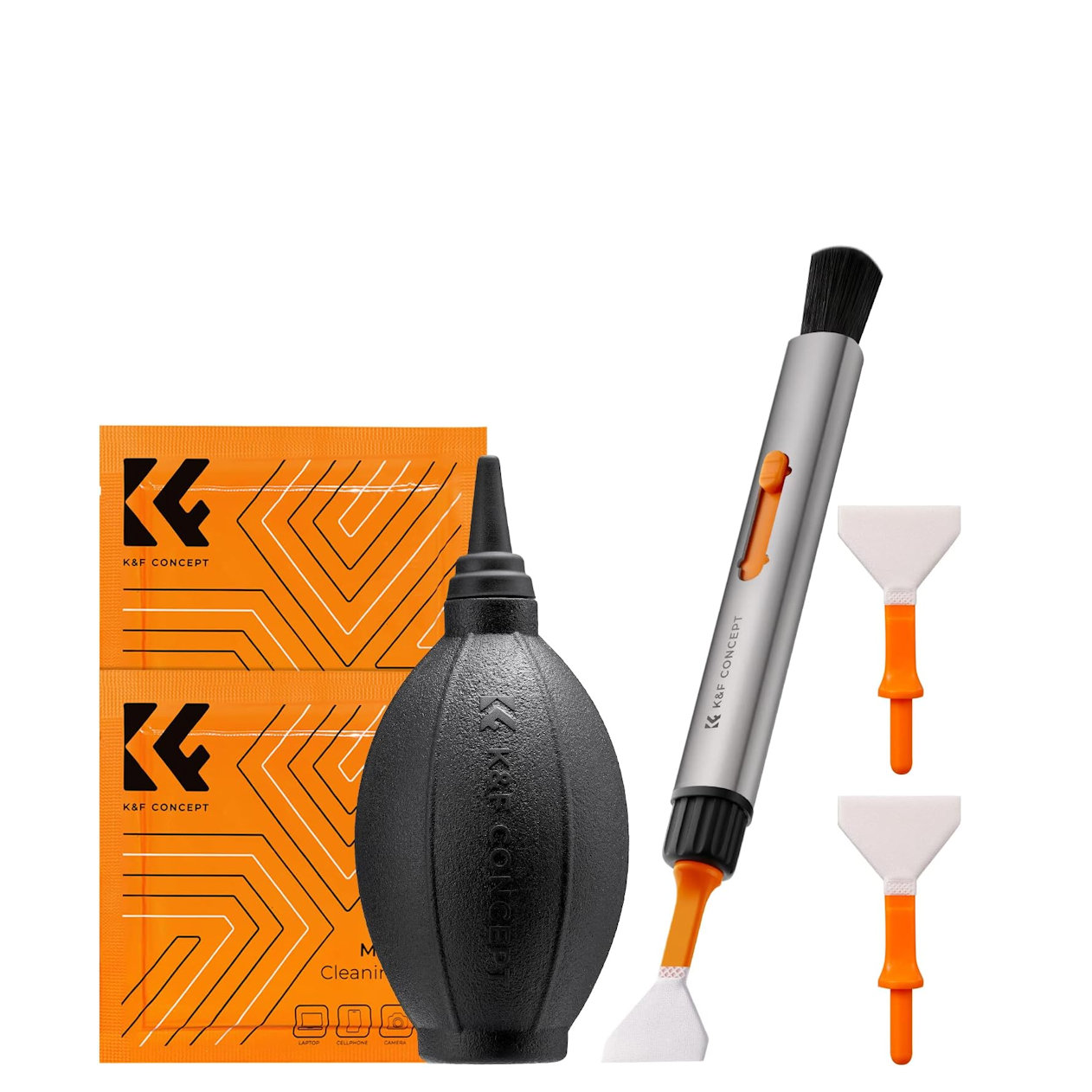
Small but versatile, this K&F Concept kit comprises a lens cleaning pen/brush, air blower, two full-frame dry cleaning swabs and two microfiber cleaning cloths. All in all, it should be enough to get your camera clean inside and out.
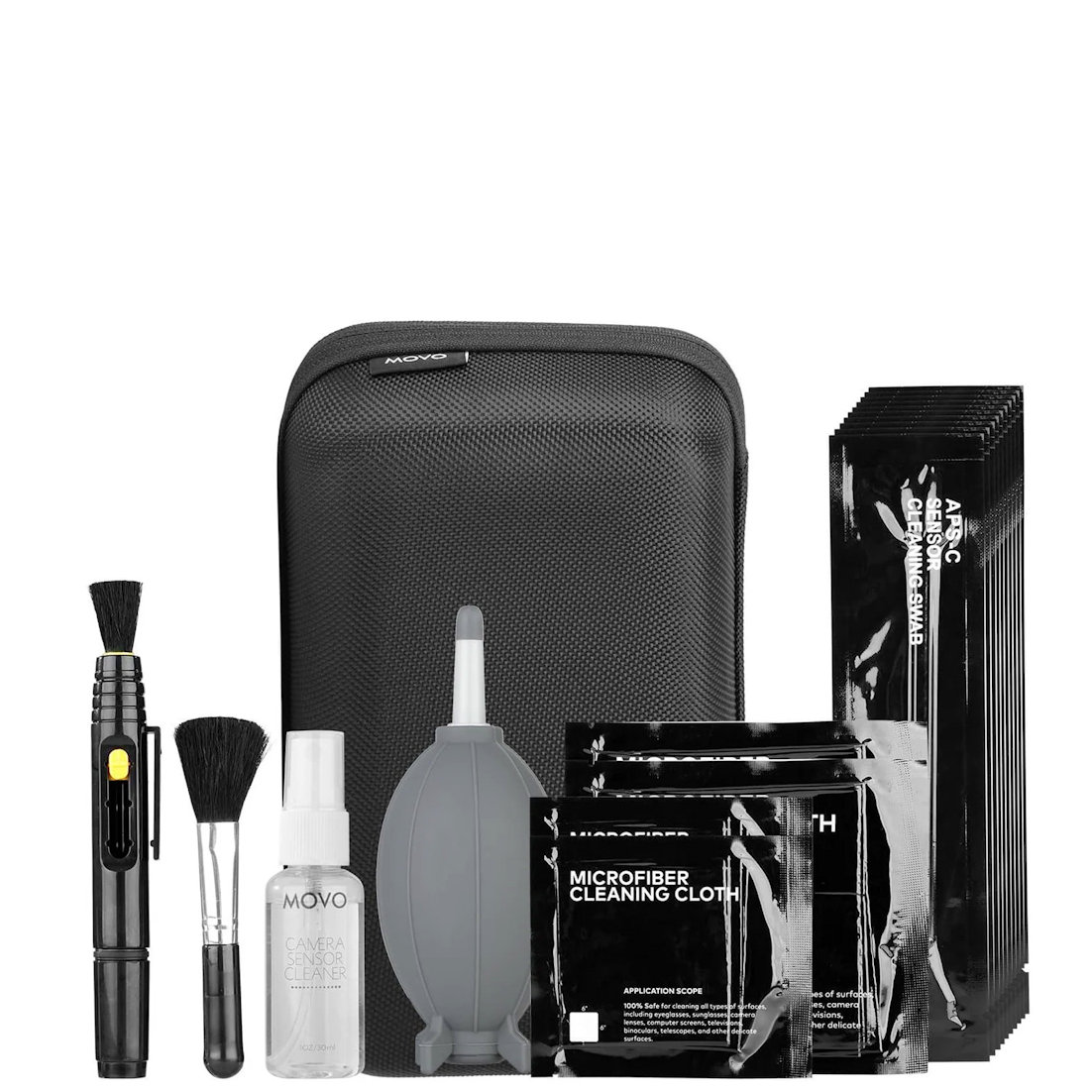
This is a comprehensive cleaning kit that comes complete with its own zip-up soft case, making it ideal for slipping into your luggage when you’re on your travels. It’s a kit of many parts but is only suitable for APS-C format cameras.
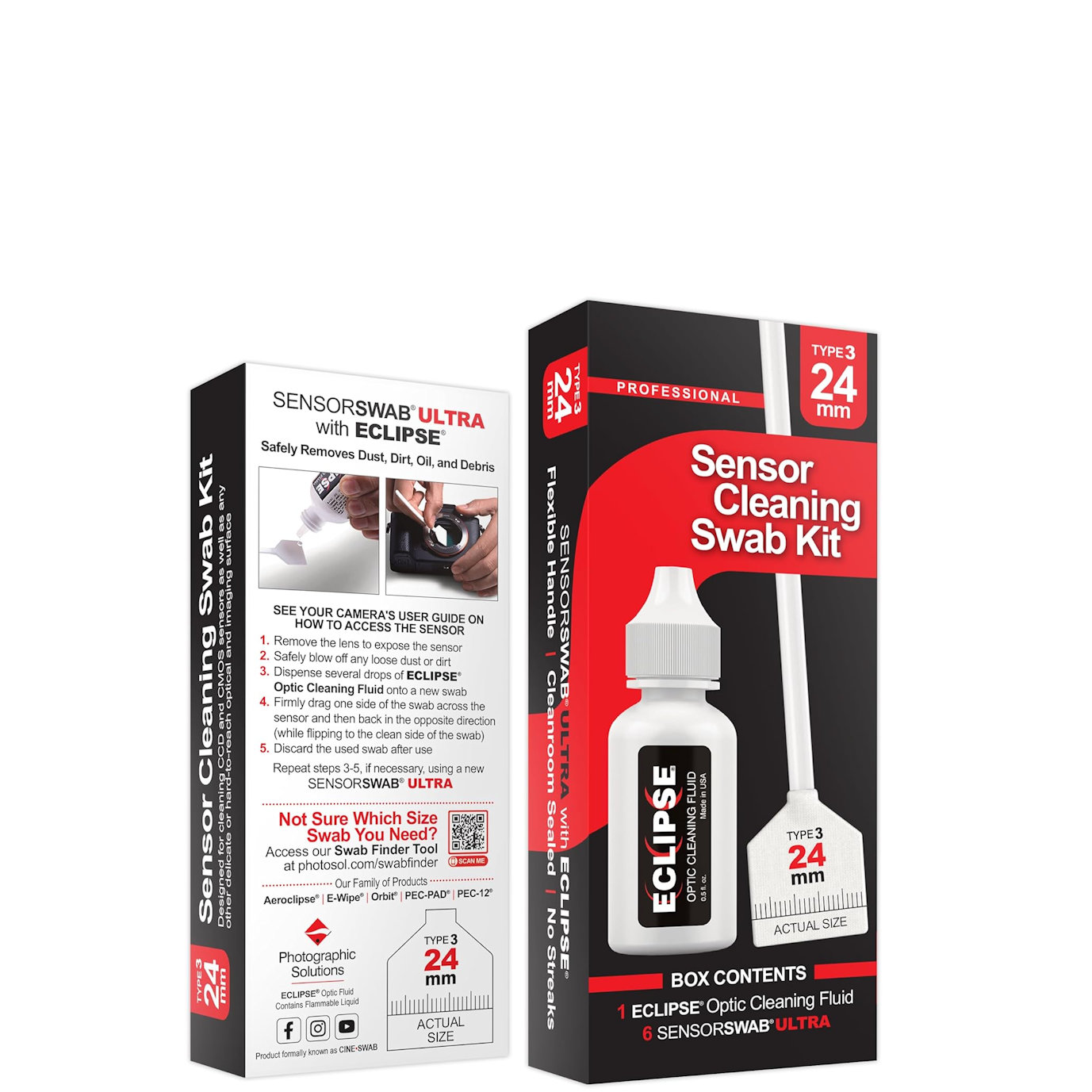
Designed to shift dust, dirt, oil and debris from your camera’s image sensor, this USA-made kit comprises six swabs and a bottle of cleaning fluid. It’s available in various options to suit different sensor sizes and is competitively priced.
The best camera sensor cleaner
Why you can trust Digital Camera World
Best overall sensor cleaning kit
1. VisibleDust EZ Sensor Cleaning Kit
Our expert review:
Specifications
Reasons to buy
Reasons to avoid
✅ You’ve already tried a blower and need a more effective cleaning solution.
✅ You want a wet swab kit that comes in various options to suit particular needs.
❌ You don’t need to go to the extreme of wet swabbing to clear away loose dust.
❌ Other wet swabbing options can work out a little less expensive.
A quick look at the VisibleDust website can be a daunting experience. The company offers a vast range of products from lamps and loupes, through air blowers and brushes, to swabs and liquids, catering to any and every sensor cleaning requirements. I went for one of the EZ Sensor Cleaning Kits. These wet swab kits are again available in many and varied options, but it’s actually pretty easy to hone in on your ideal kit. A section of the website lists an enormous range of cameras, with information on what swab size you need.
Next up, there’s a guide to three different formulations and strengths of liquid, ranging from Sensor Clean, through VDust Plus to Smear Away, and information on the alternative green and orange sensor cleaning Vswabs. I settled on a kit containing the orange swabs and VDust Plus liquid, the components of which are designed to work together as a medium-strength cleaning solution. The liquid tackles both water-based and oil-based stains, while the ultra-soft swabs have a unique woven pattern that maximizes absorbency while minimizing any risk of stray fibers being shed.
As always, I used an air blower to shift any loose dust before setting to with the wet swabs. My chosen kit contained a small vial of liquid and four swabs. Only a couple of drops of liquid are required and the swabs have flexible stems that provide good tactile feedback. I found the kit to be highly effective at removing even stubborn stains from our test camera’s image sensor, and the solution also applies a moderate anti-static barrier to avoid subsequent contamination.

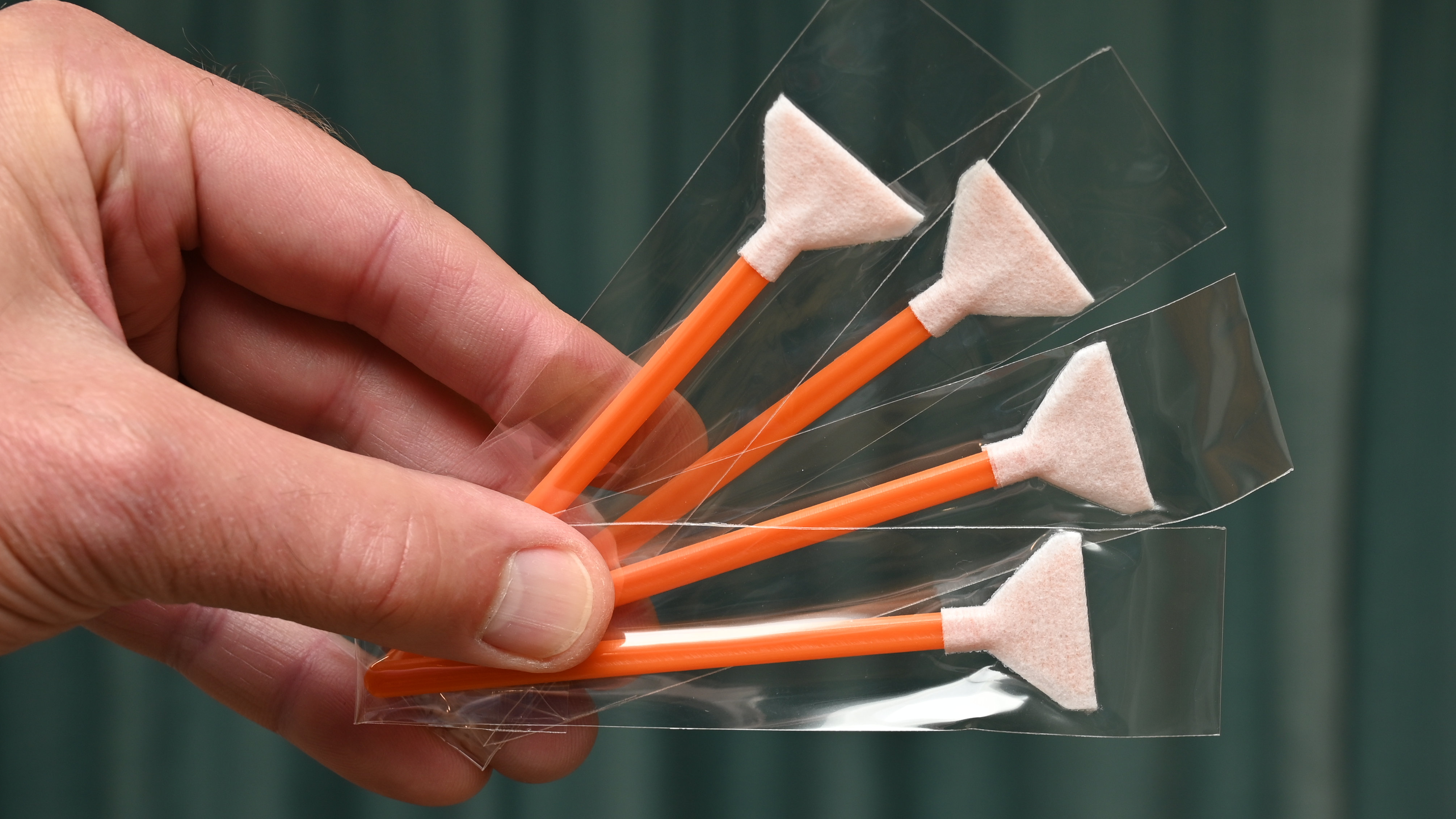
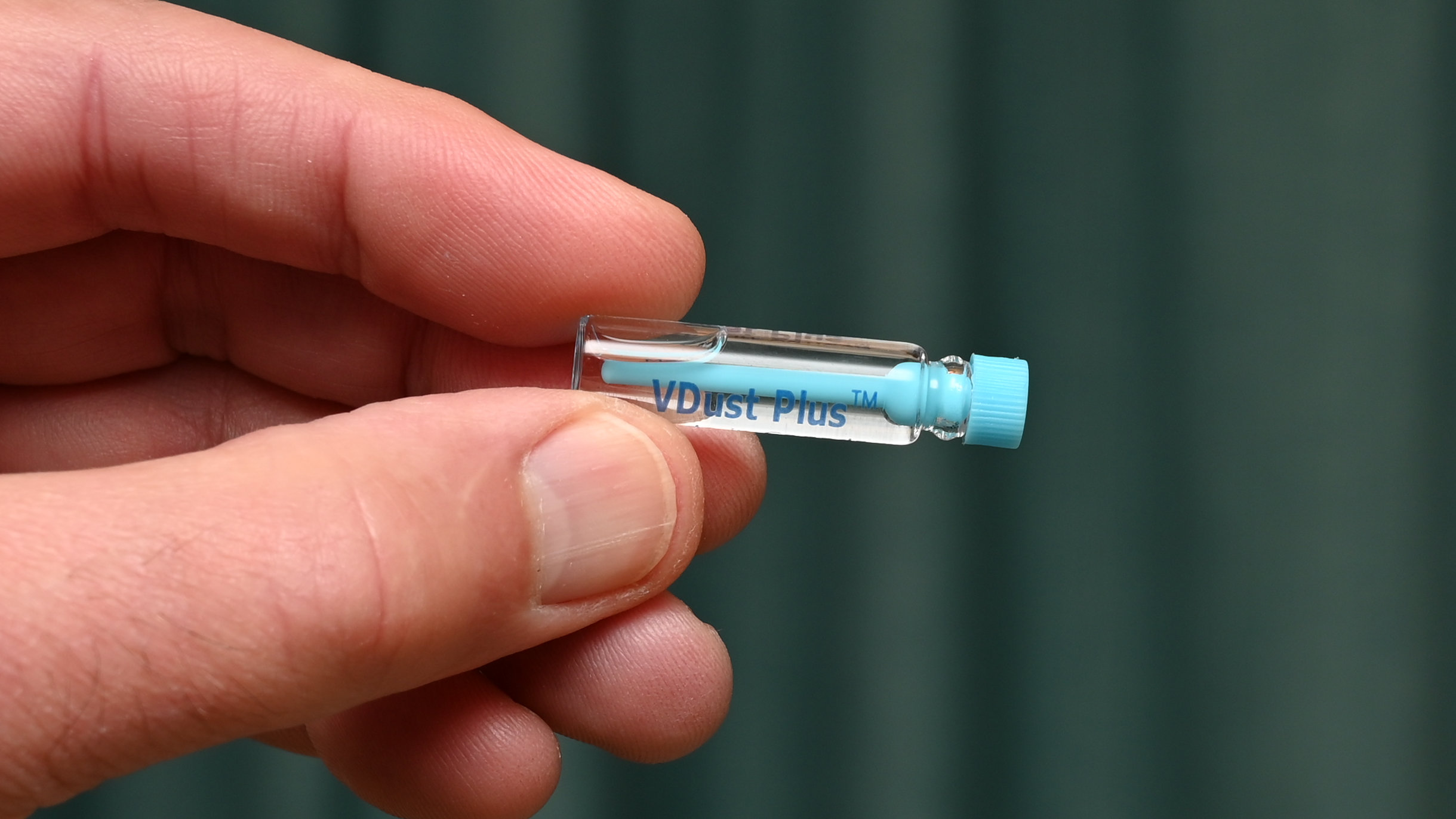
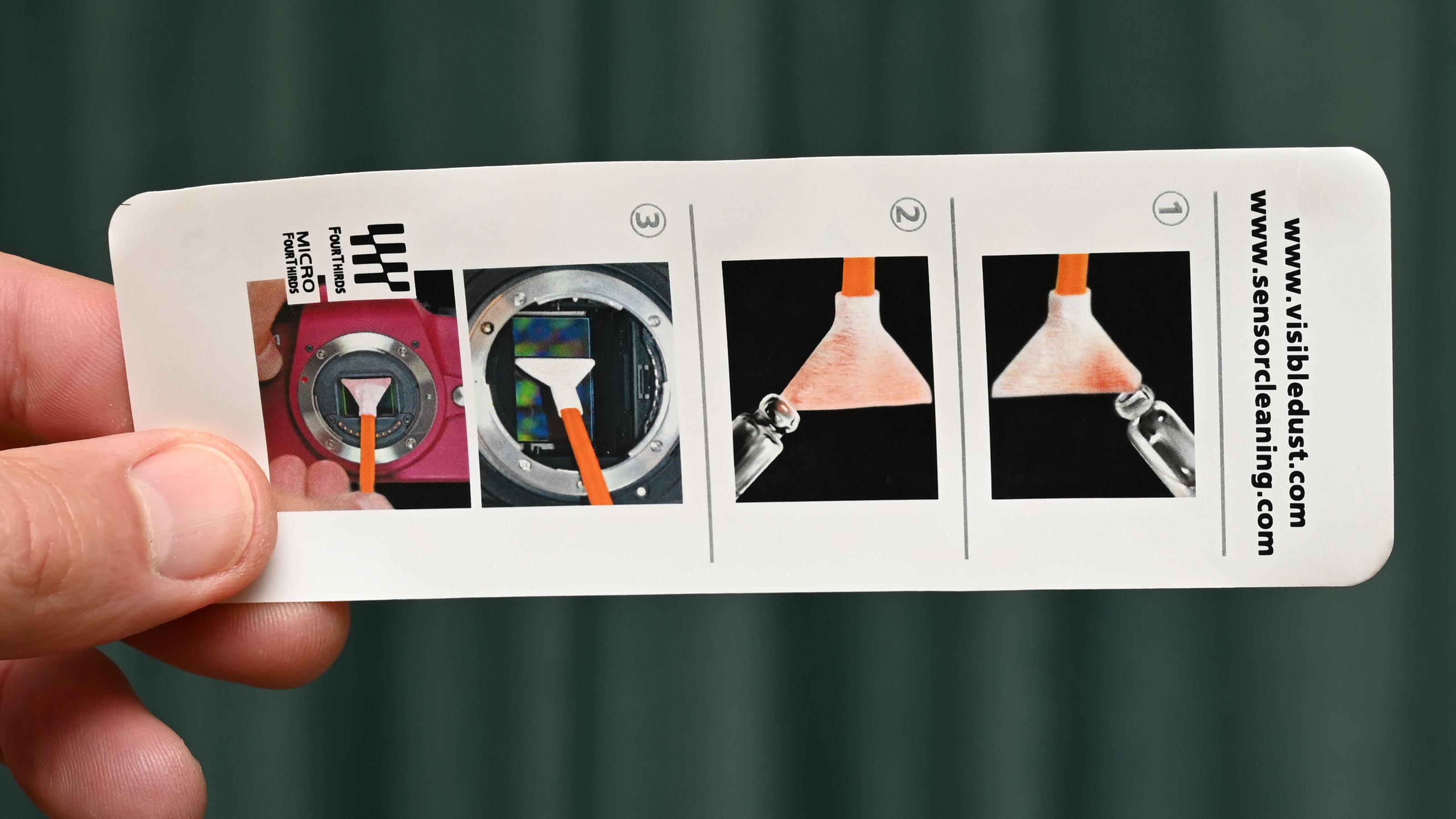
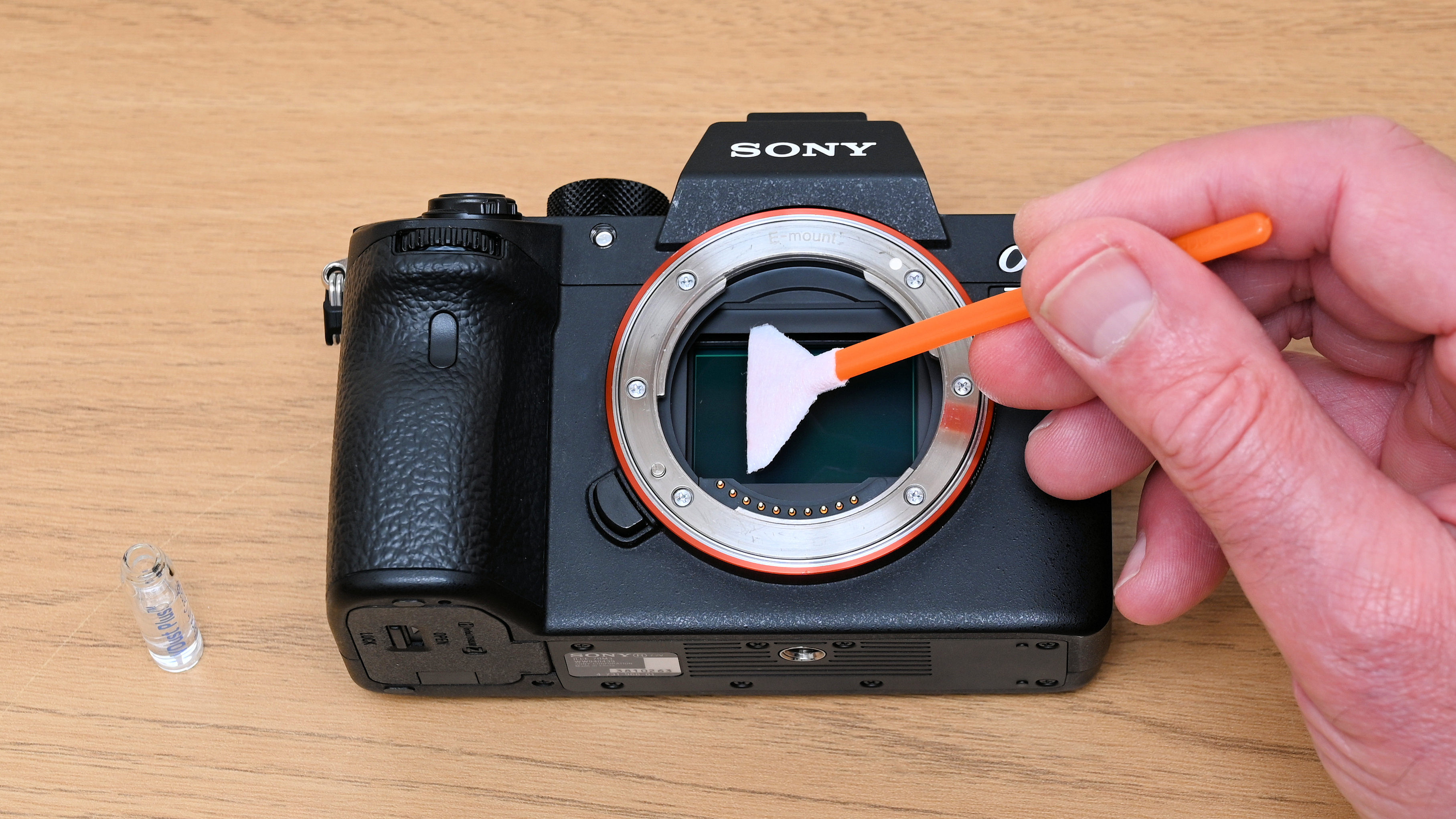
Features | There are many options for different sensor sizes and types of wet cleaning. | ★★★★★ |
Design | The swabs and liquid look and feel like they’re made to the highest quality standards. | ★★★★★ |
Performance | The kit makes a good job of shifting grime that other cleaning kits leave behind. | ★★★★★ |
Value | Made in Canada, they’re not the cheapest wet swab kits you can buy. | ★★★★ |
Best air blower
2. JJC Professional Dust Free Air Blower
Our expert review:
Specifications
Reasons to buy
Reasons to avoid
✅ You want a blower with the added feelgood factor that it has a built-in filter to minimize the risk of it ingesting dust that it will then blow into your camera.
✅ You’re nervous about using a swab on your camera’s image sensor and want to stick to using a blower.
❌ You’d rather have a multi-purpose kit that includes swabs, cloths and other accessories for general camera care, instead of just for cleaning your image sensor.
❌ You’d rather have an air blower with a brush that can optionally fit over the business end, making it useful for cleaning other parts of your camera as well.
Small specs of dust floating around in the air can easily drift into your camera when you’re changing lenses, and even when you’re zooming in and out with a lens that telescopes rather than having an internal zoom mechanism. Thankfully, they can just as easily be blown out again with an air blower.
A problem is that air blowers suck air in so they can blow it out again when you give them a squeeze, and the air that’s sucked in can contain specs of dust that you’ll then fire at your image sensor. The worst-case scenario from a cleaning point of view is that you can end up with more dust on your image sensor than when you started.
The JJC Professional Dust Free Air Blower is designed to be a more effective solution. The trick is that it features a pair of one-way valves, fitted to the air intake at the back and behind the output nozzle at the front. Air is therefore only sucked in at the back and to avoid any dust being ingested, the inlet is covered by a filter that traps any specs of dust or other particles with a diameter of more than 21 micrometers. Of course, no filter lasts forever, but the kit comes with three additional filters and a tool for replacing them.
The air blower feels of good quality in the hand, with a grippy silicone airbag. Better still, a soft silicone cap is fitted to the front end of the nozzle, avoiding any potential damage if you make a slip and it comes into contact with the image sensor itself. With its large airbag, I found that the blower had a good deal of puff and did a very respectable job of clearing loose dust from the image camera. As always, I used the blower with the camera’s lens flange facing downwards. This helps loose dust to fall out and reduces the risk of more dust from the air falling into the camera. All in all, the blower does a good job but is no substitute for dry or wet swabbing if you have stubborn particles or stains on your image sensor.
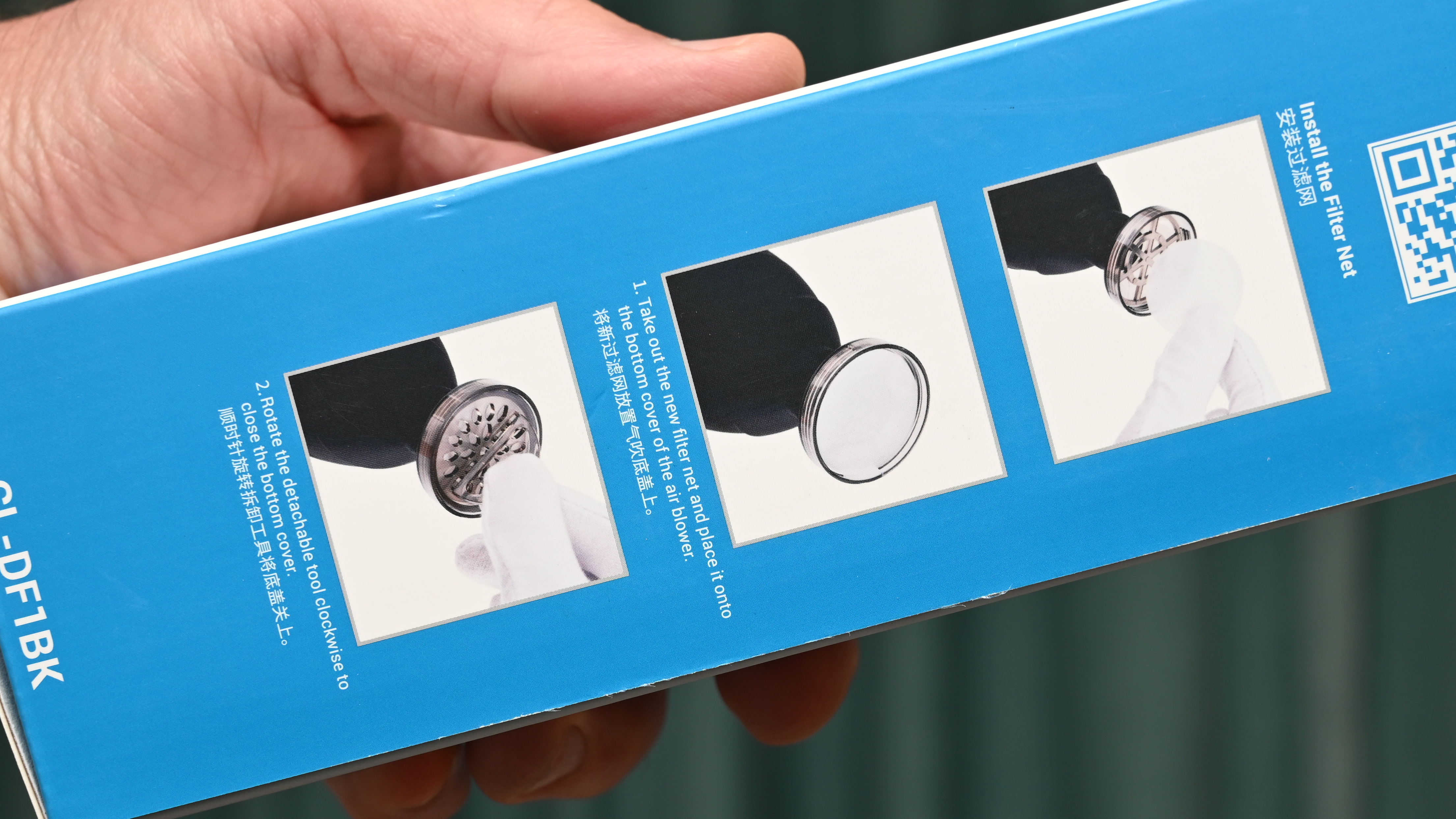
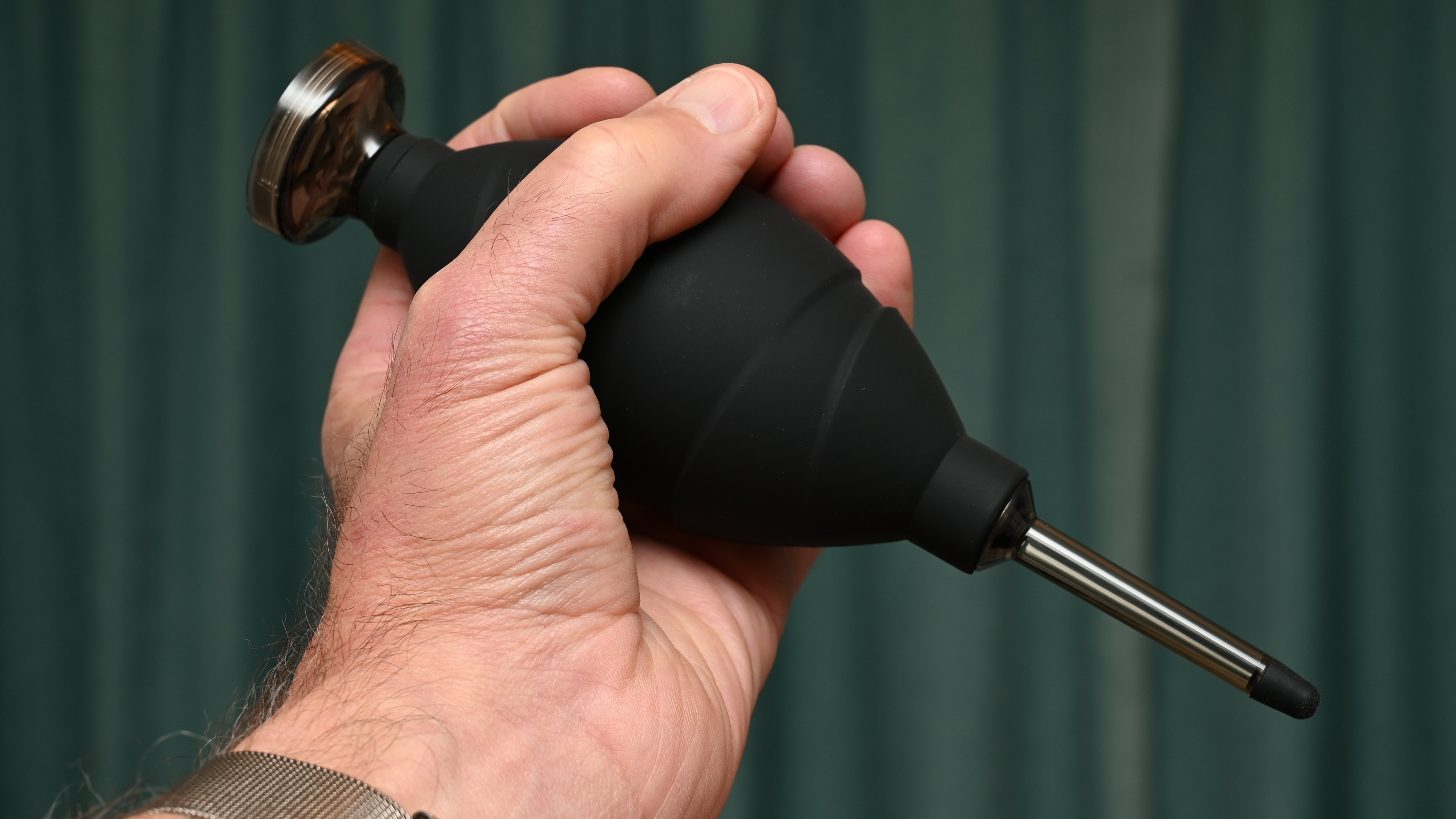
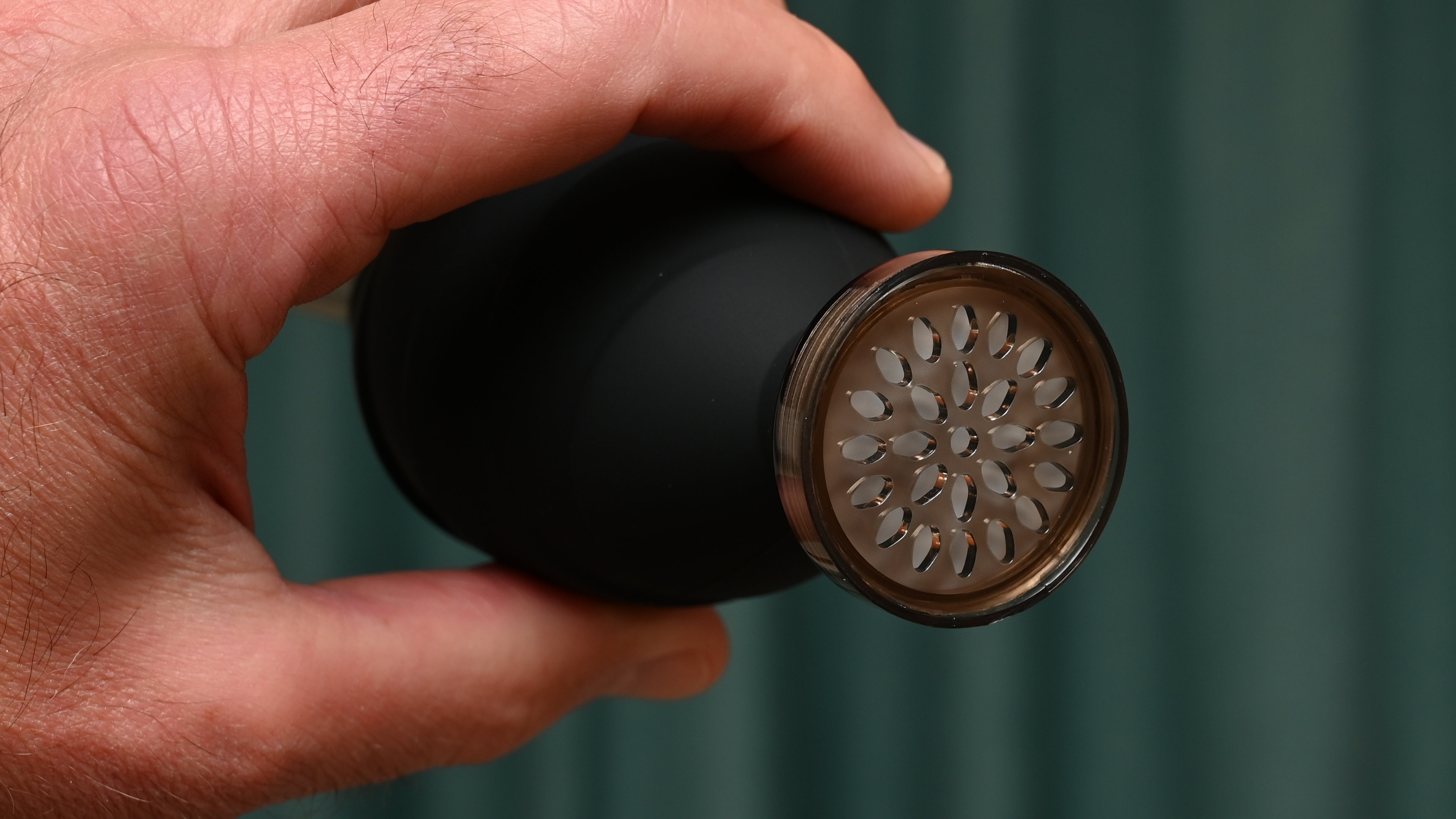
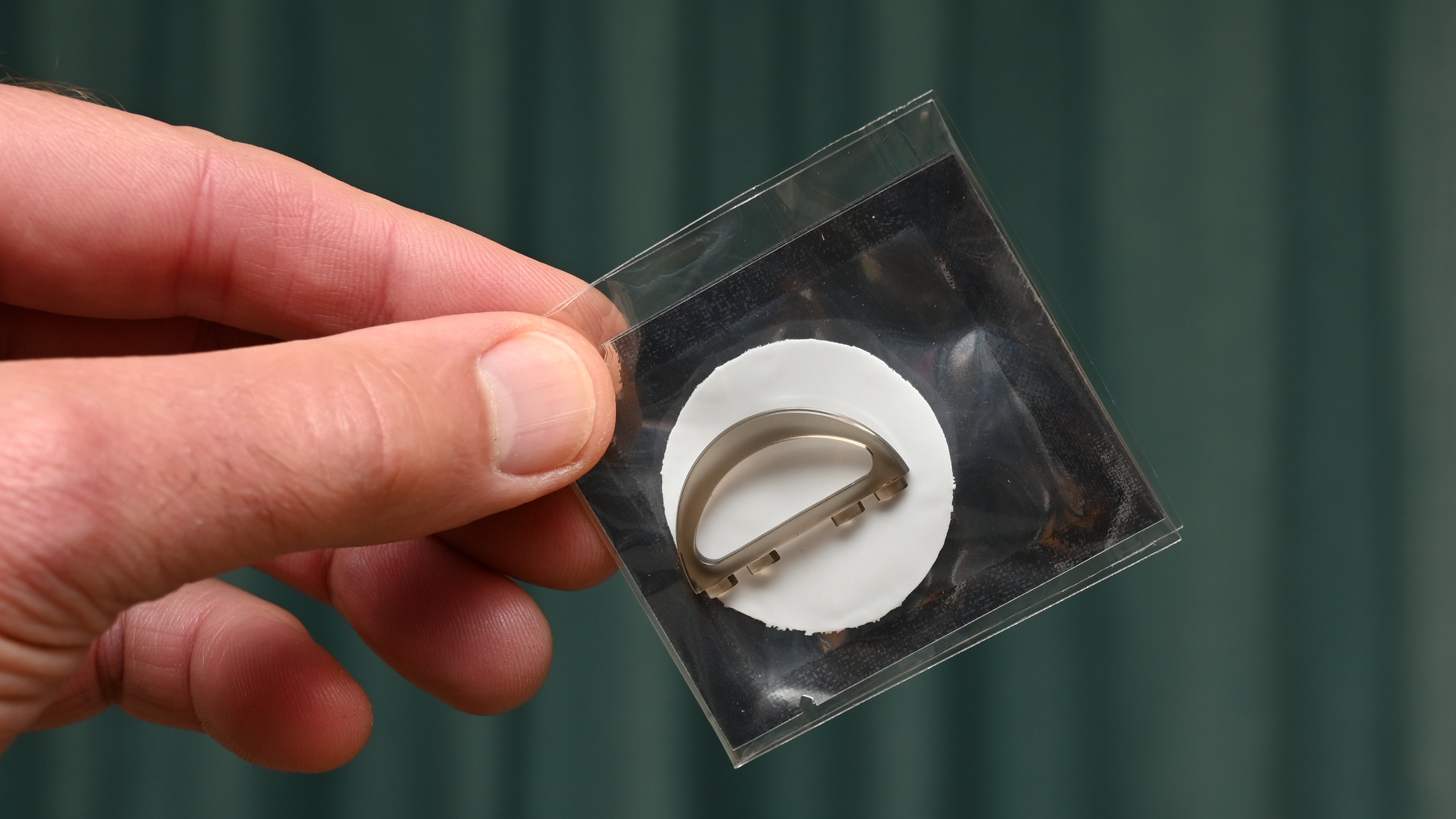
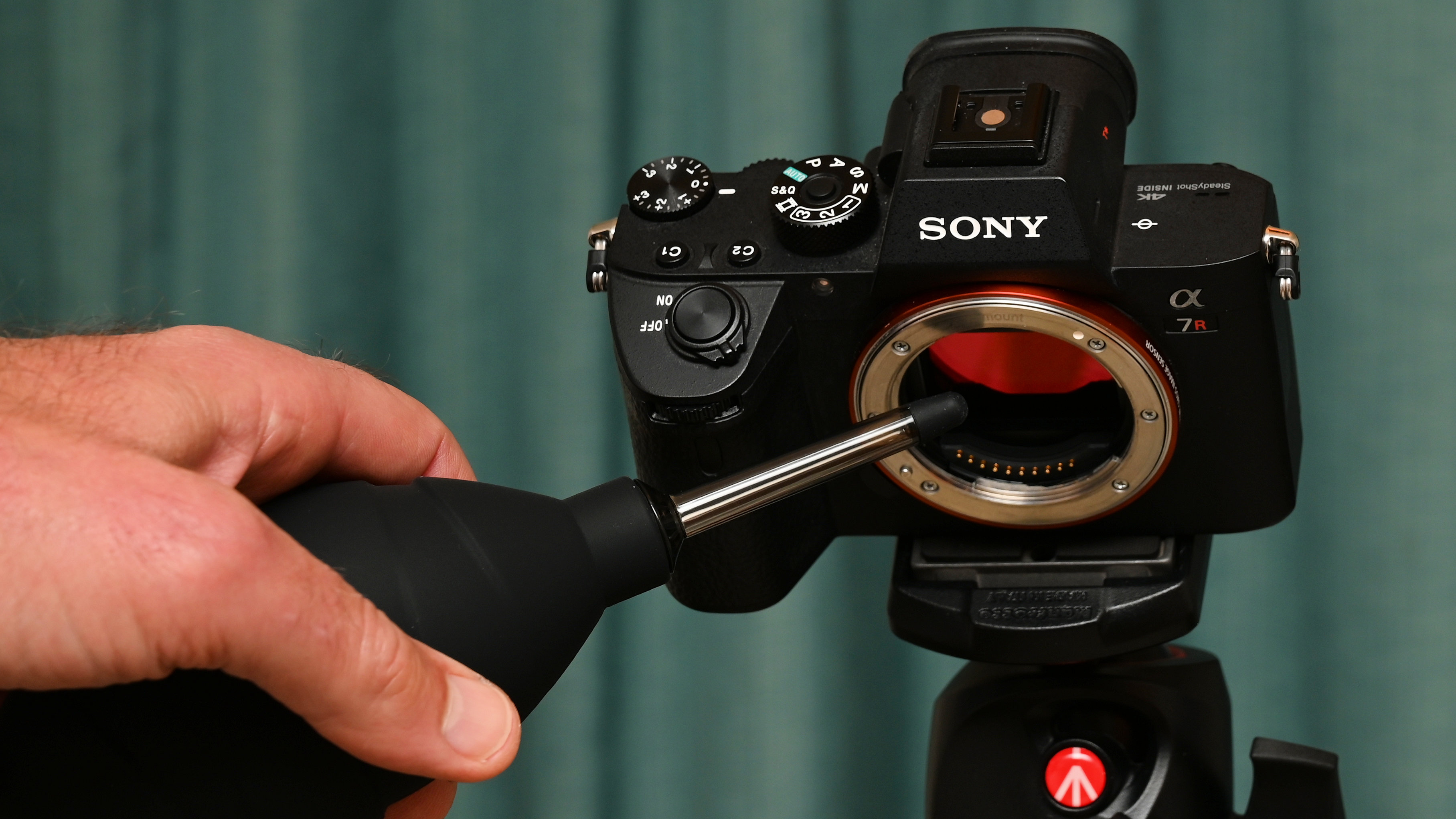
Features | It’s ‘just’ an air blower but it does have a built-in filter with additional replacements supplied. | ★★★★ |
Design | It’s a neat design feature that the filter is replaceable and that a tool is supplied for the job. | ★★★★★ |
Performance | If dust and other loose particles can be shifted by a blower, this one will shift them. | ★★★★ |
Value | It’s no more expensive than some basic blowers that don’t contain a filter. | ★★★★★ |
Best dry swab cleaning kit
3. JJC CL-F24K Full Frame Sensor Cleaner
Our expert review:
Specifications
Reasons to buy
Reasons to avoid
✅ After blowing any loose dust off with a blower, you feel that a dry swab is all you need to finish the job, rather than resorting to wet swabbing.
✅ You’ve got a couple of little dust specs on your sensor that are too stubborn to be cleared with an air blower alone.
❌ If you have any streaks, smears or droplets of oil on your sensor, it’s unlikely that dry swabbing will be sufficient to clean them off.
❌ You’d rather cut to the chase and use a wet swabbing solution rather than trying dry swabs as a halfway house after using an air blower.
Try blowing dust off a bathroom mirror and you’ll often find that even after all the puff you can muster, it just stays put. Without resorting to washing it down, a quick wipe with a dry cloth is generally all that’s needed to clean it up. These dry swabs work on the same principle. I’d always use an air blower first, to shift any loose dust, but dry swabbing is the next step.
The JJC CL-F24K Full Frame Sensor Cleaner was obviously designed with DSLRs in mind. Not only do they have long handles, ideal for stretching through the reflex mirror section of a camera, but come complete with a pictorial step-by-step guide on how to lock up the mirror and open the shutter for cleaning, in both Canon and Nikon DSLRs, and the guide is neatly printed in full color.
Not just for DSLRs with full-frame CCD or CMOS image sensors, the swabs are equally effective for mirrorless cameras, where the long handles give plenty of room for maneuvering, and they’re also available in a smaller swab width for APS-C format cameras. The swabs themselves have a preferable V-shaped profile and a high-quality microfiber tongue. I bought a pack of 12, in which every swab is individually vacuum-packed. As I’d expect with any swab, wet or dry, JJC recommends using it only once before discarding it. Even so, a 12-pack should keep me going for quite a while.
After using an air blower to remove any loose dust on my camera’s image sensor, I found that these dry swabs took care of most of what was left. They failed to shift a few stains and smears from a particularly contaminated image sensor but did a very good job overall.
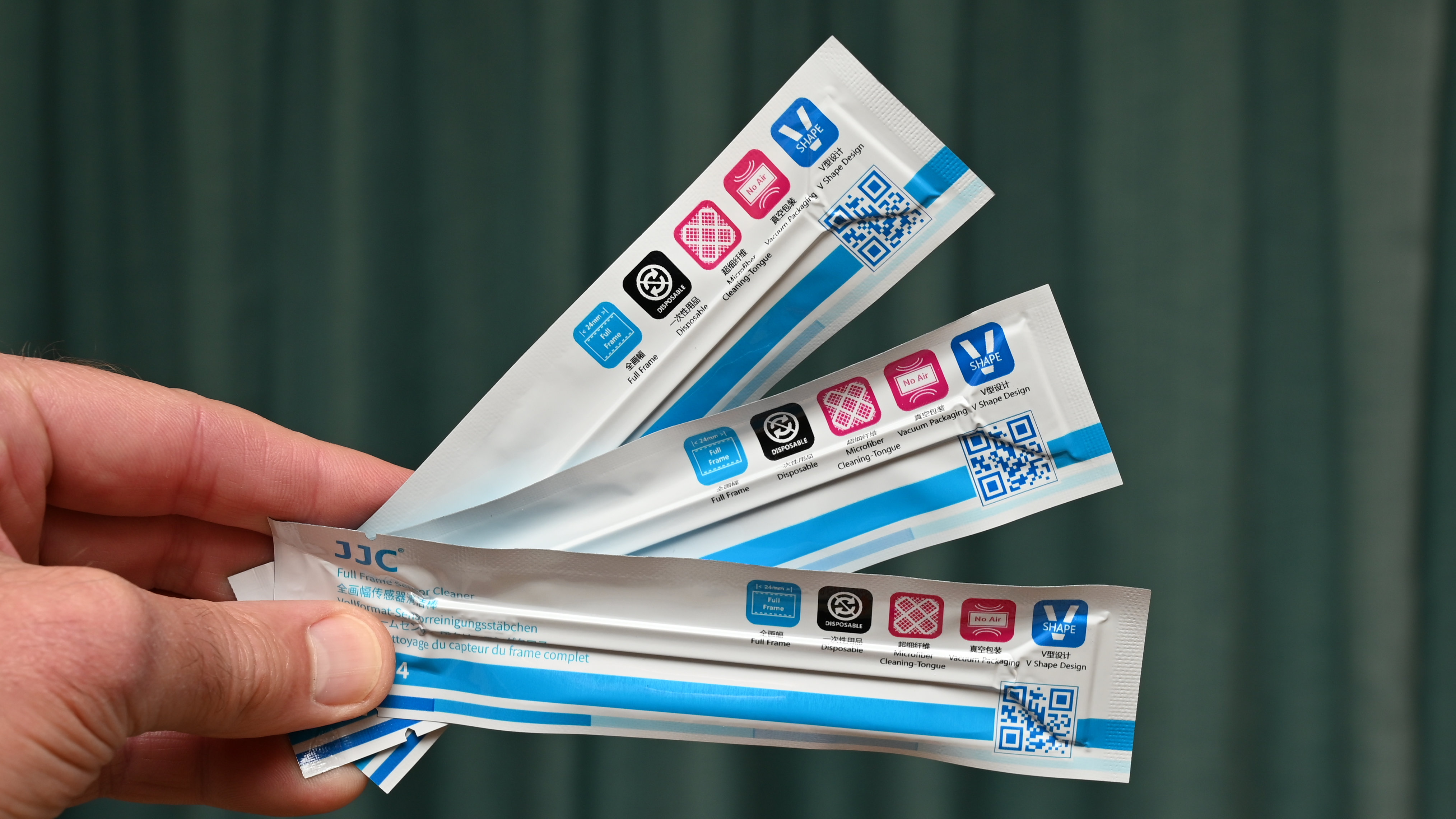
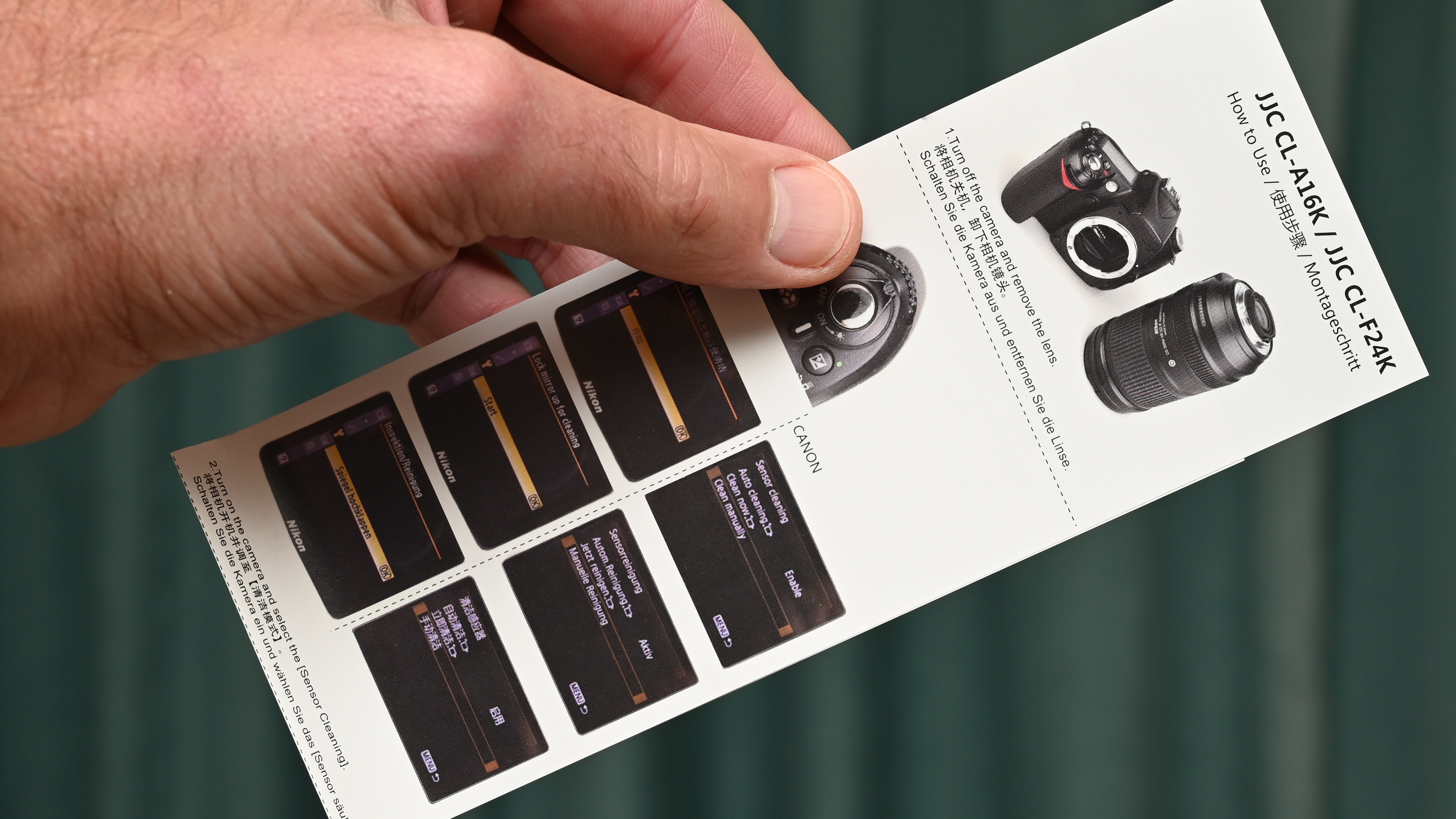

Features | This kit is a bit of a one-trick pony but the dry swabs are well made and serve their purpose. | ★★★★ |
Design | The long flexible handles make for easy and comfortable use, for DSLRs as well as mirrorless cameras. | ★★★★★ |
Performance | Performance lags behind that of wet swabbing but will often enable satisfactory cleaning. | ★★★★ |
Value | There’s no liquid supplied but they’re very good value for a set of 12 dry swabs. | ★★★★★ |
Best compact multi-purpose cleaning kit
4. K&F Concept Cleaning Kit
Our expert review:
Specifications
Reasons to buy
Reasons to avoid
✅ You want a fairly comprehensive kit that can take on a variety of tasks including cleaning lenses and other camera parts as well as the image sensor.
✅ You don’t mind sticking to a solution that doesn’t stretch to wet swabbing.
❌ You’d rather have a specialist image sensor cleaning kit rather than a ‘Swiss army knife’ that caters to different applications.
❌ You already have an air blower and microfiber cleaning cloths, in which case parts of the kit will be redundant.
Testing this K&F kit gave our trusty and very well-used Sony camera a chance to clean up its act. The kit contains two microfiber cloths which are good for cleaning any and all of the surfaces on the camera and lens. Next up, there’s a ‘lens pen’ which has the typical extending brush at one end and a removable triangular profile pad at the other.
For harder-to-reach places, including the camera’s image sensor, there’s an air blower. However, it’s quite a basic affair. Air is sucked in as well as being blown out through the nozzle at the front. The upshot is that once you’ve blown some dust off a surface, it might easily be sucked in through the nozzle and blown out again next time around.
The final component of the kit is a pair of individually vacuum-packed dry swabs. With cleaning pads measuring 24mm in width, they’re sized for full-frame image sensors. The swabs themselves are very short but slot into the end of the lens pen, which greatly increases their overall length. Even so, you can use them on their own for mirrorless cameras, where the image sensor isn’t deeply recessed in, compared with a DSLR that has a reflex mirror assembly. Replacement swabs are available separately, in packs of various quantities, and for APS-C format as well as full-frame sensors.
I found that the kit certainly had our Sony camera looking very presentable again but the air blower isn’t particularly effective and the swab handles are a little inflexible for my liking.
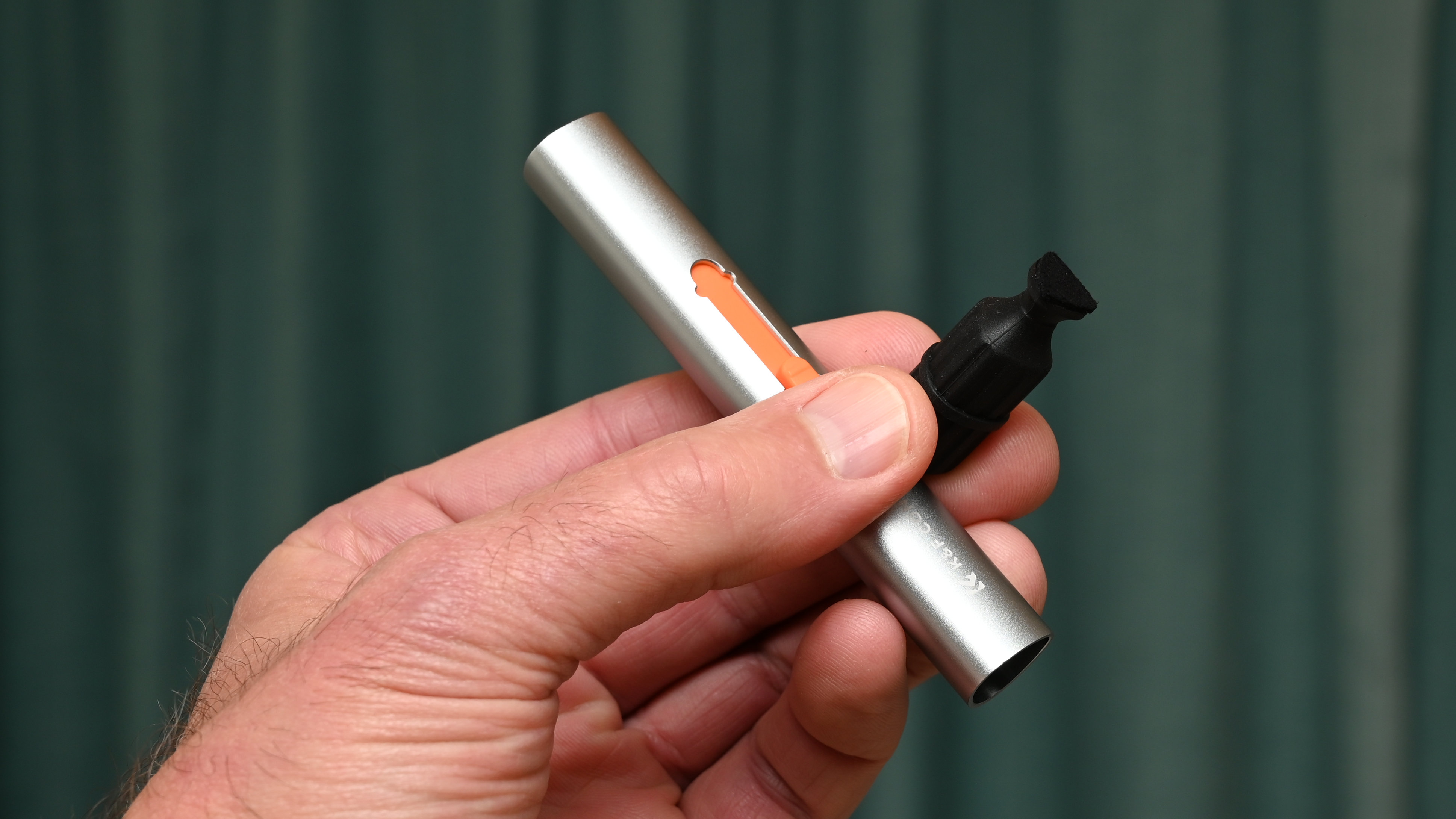
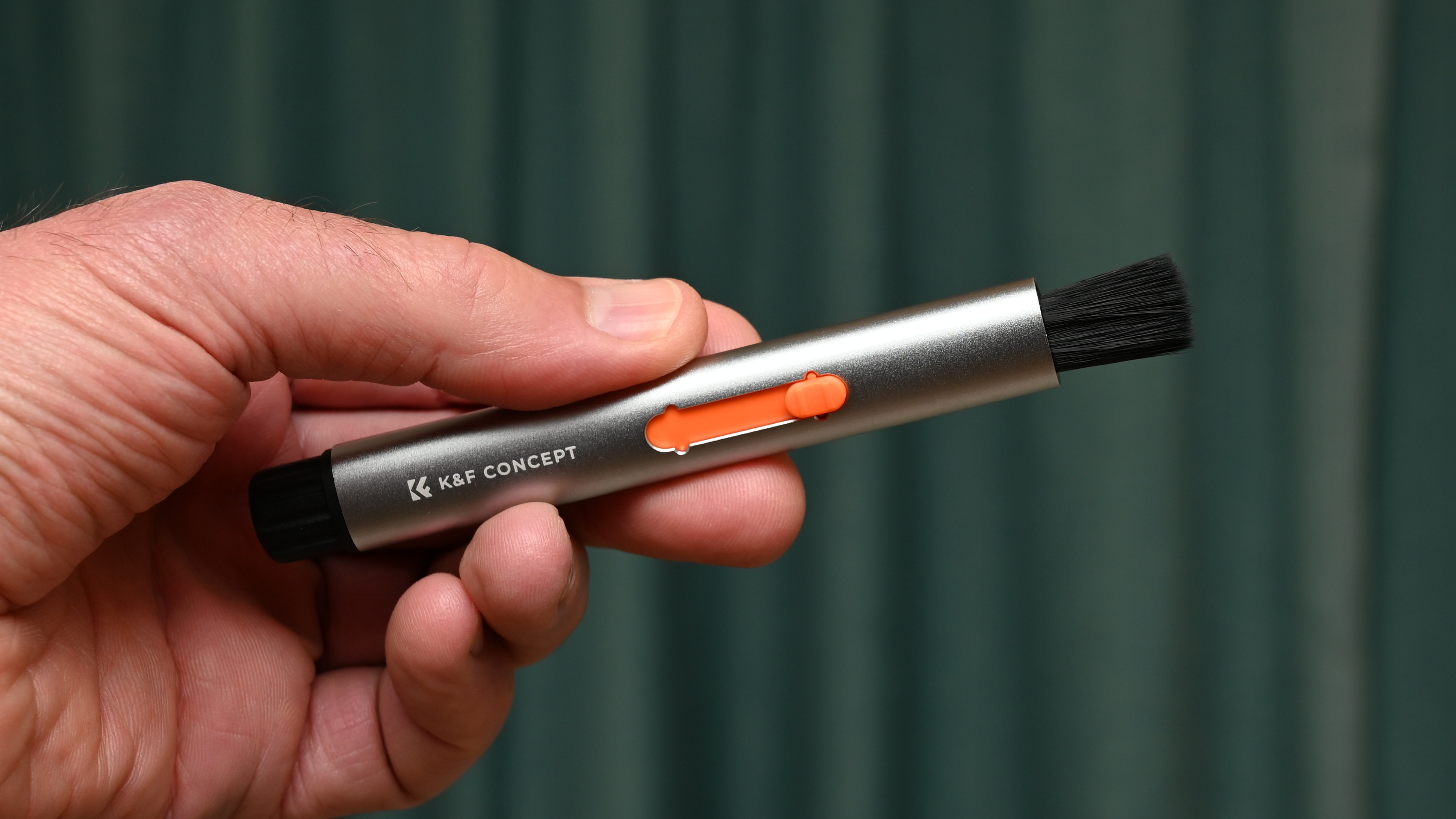
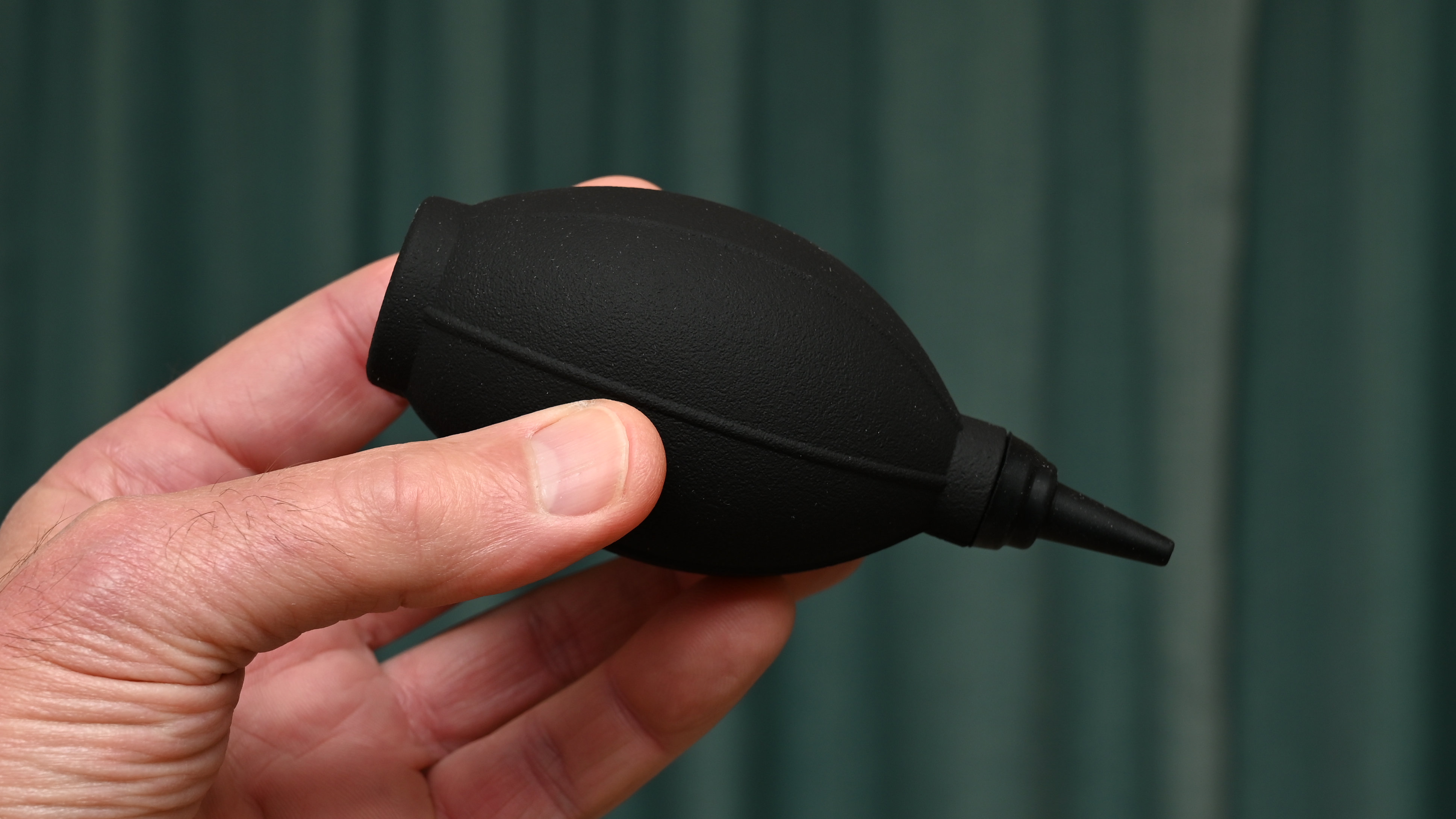
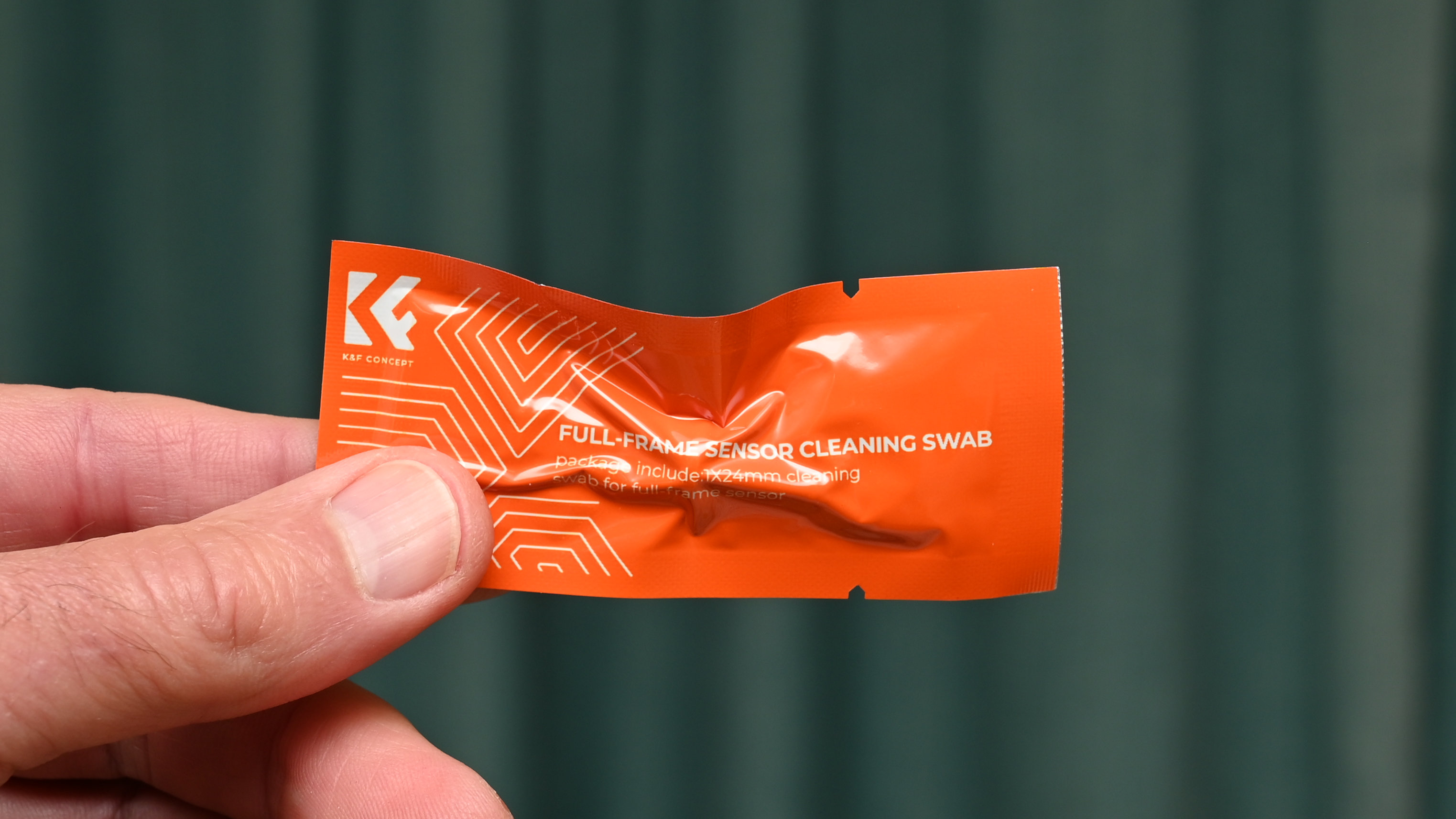
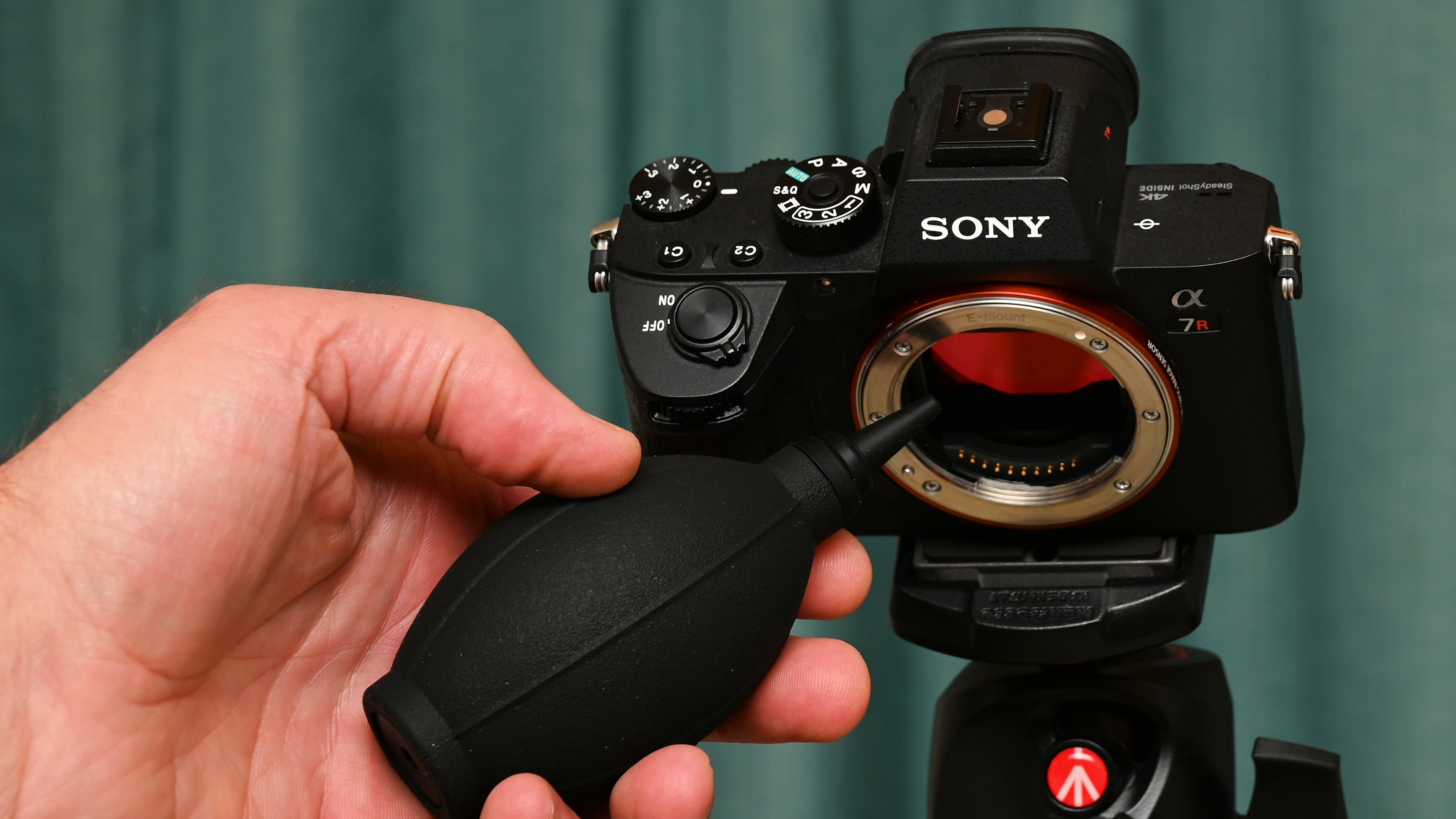

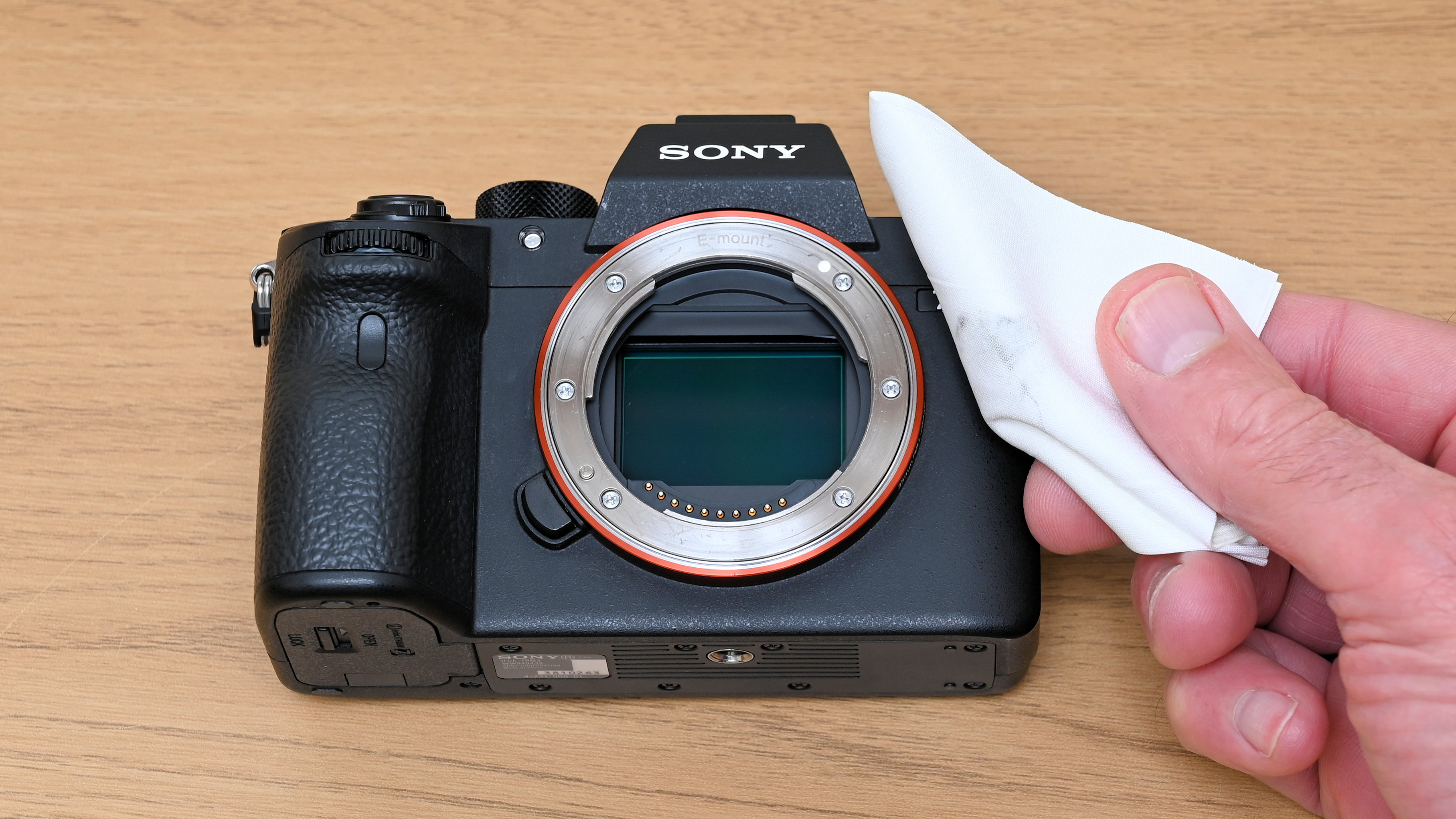
Features | There are four different types of components in the kit, giving it a good set of features. | ★★★★ |
Design | It’s good overall, although the sensor swabs are quite stiff and inflexible. | ★★★★ |
Performance | The kit does a good job overall but can’t compete with the power-clean of a wet swab system. | ★★★★ |
Value | You get quite a lot for your money, it’s a competitively priced multi-function kit. | ★★★★ |
Best multi-purpose cleaning kit for travel
5. Movo Deluxe Essentials Camera Cleaning Kit
Our expert review:
Specifications
Reasons to buy
Reasons to avoid
✅ You want a multi-function cleaning kit that’s well suited to life on the road, coming with its own travel pouch.
✅ You have an APS-C format camera, as that’s the only size for which this kit is available.
❌ You want to make use of the wet cleaning swabs that come with the kit but you have a Micro Four Thirds or full-frame camera. The swabs are only for APS-C format sensors.
❌ You already have some of the items supplied in the kit, so don’t feel the need for duplicates.
I’ve got an old Nikon D7100 that’s seen better days and spends most of its time nowadays sitting on the shelf at the back of a wardrobe. Testing this multi-purpose cleaning kit gave me the opportunity to restore it to its former glory. The first thing I noticed about the Movo kit is that the retail box is much larger than anything else I was testing. The reason is two-fold. Firstly, the kit contains a wide range of cleaning items and, secondly, they come complete in a neat zip-up soft case. That makes the kit ideal for stashing in my luggage if I’m traveling or just going out on a photo trip.
Catering to pretty much any camera cleaning job, the kit contains an air blower, a lens pen with a retractable brush and circular pad with a removable cap at the back end, two 6-inch microfiber cloths, and two 9-inch microfiber cloths. Getting down to the nitty-gritty of sensor cleaning, the kit also contains a soft sensor brush, 10 APS-C-sized swabs, and a bottle of liquid cleaning solution for use with the swabs. The swabs as well as the microfiber cloths are individually vacuum-packed.
The air blower is a pretty basic affair, sucking unfiltered air in through both a valve at the rear plus the output nozzle at the front, but at least it has a soft silicone tip at the end of the nozzle to guard against causing any accidental damage. I’m not convinced about the usefulness of the sensor brush but the swabs and cleaning liquid performed well in my tests. With fairly little effort, my aging Nikon D7100 was soon seeing better days, inside and out.
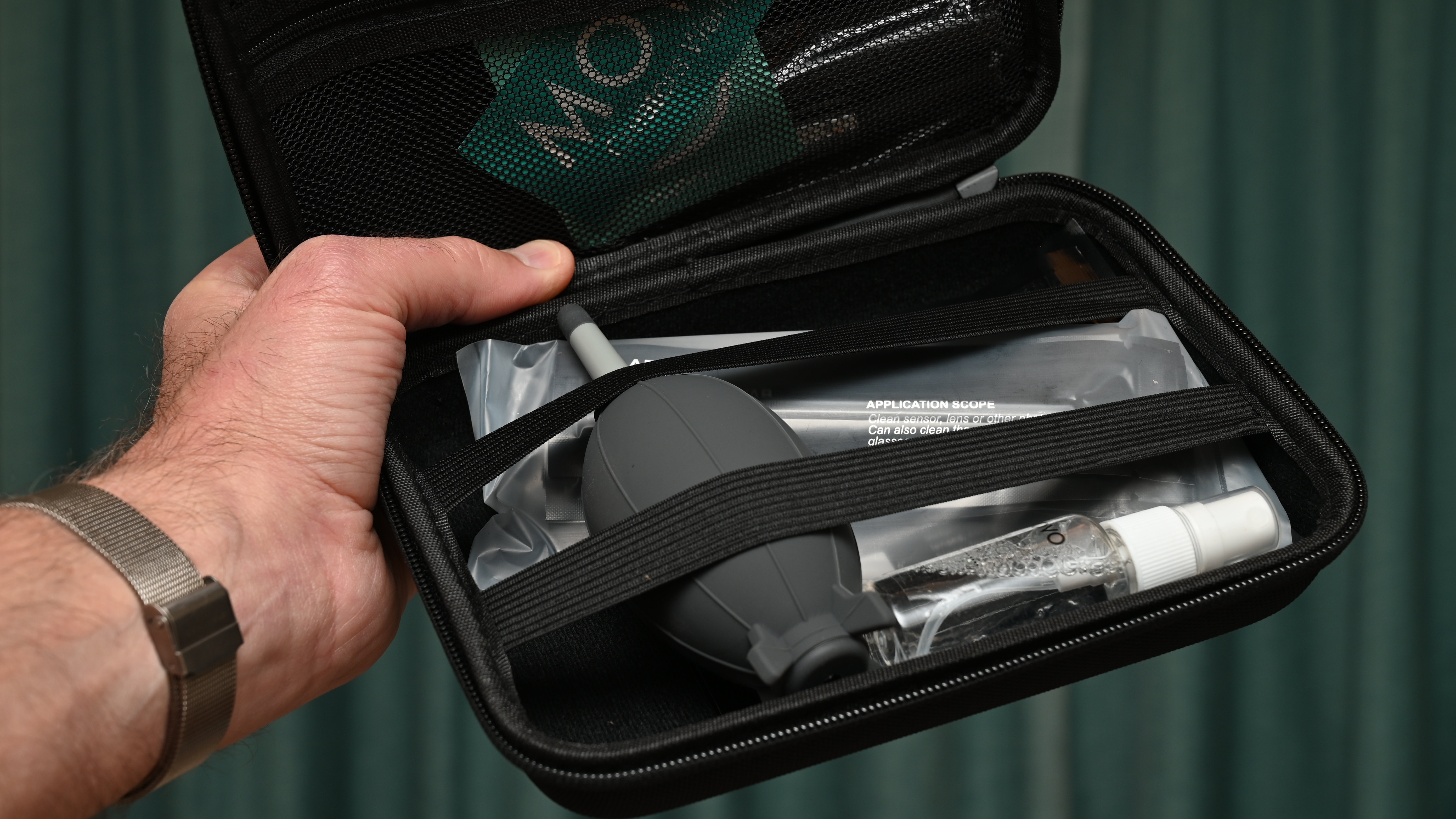
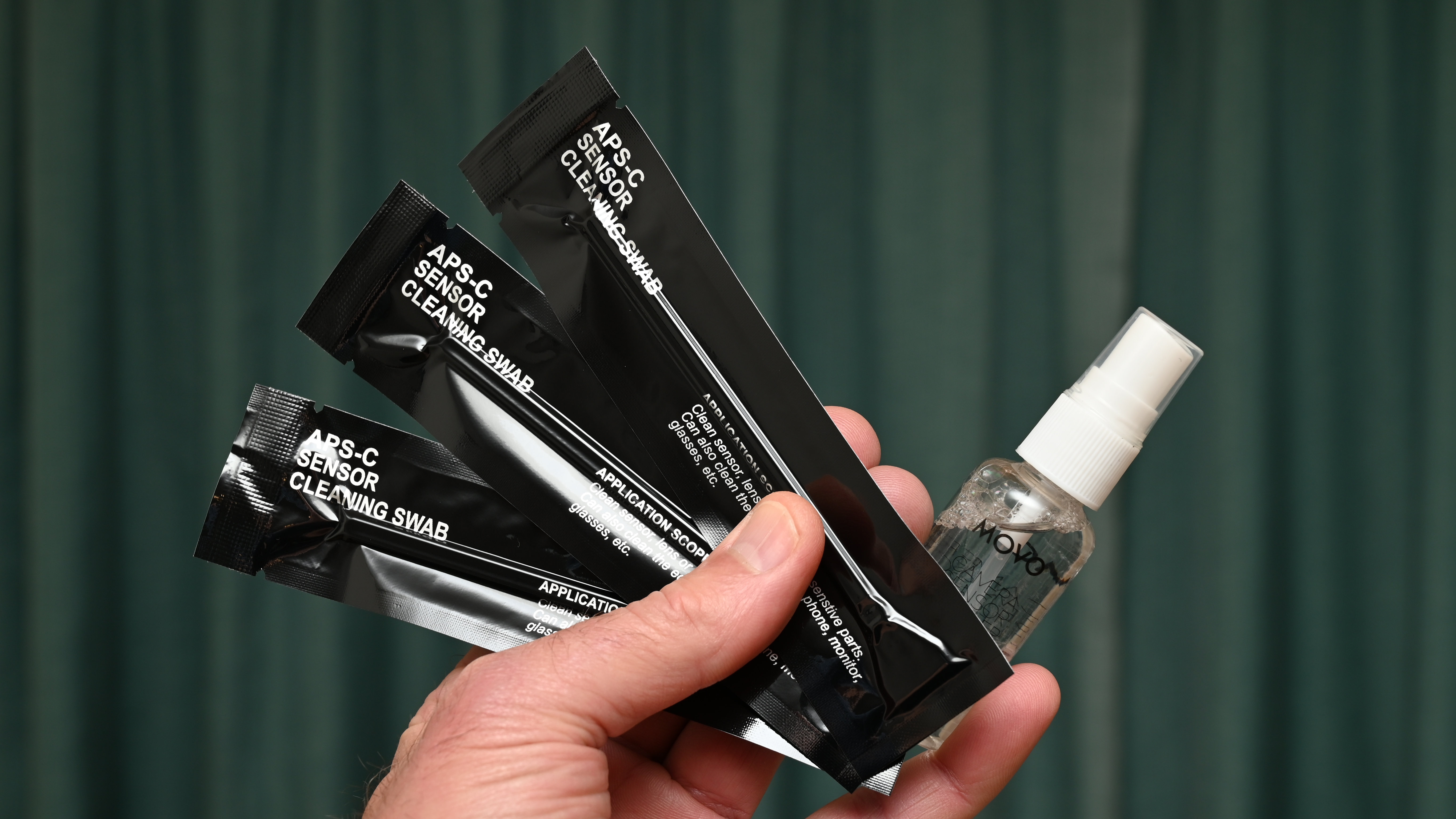
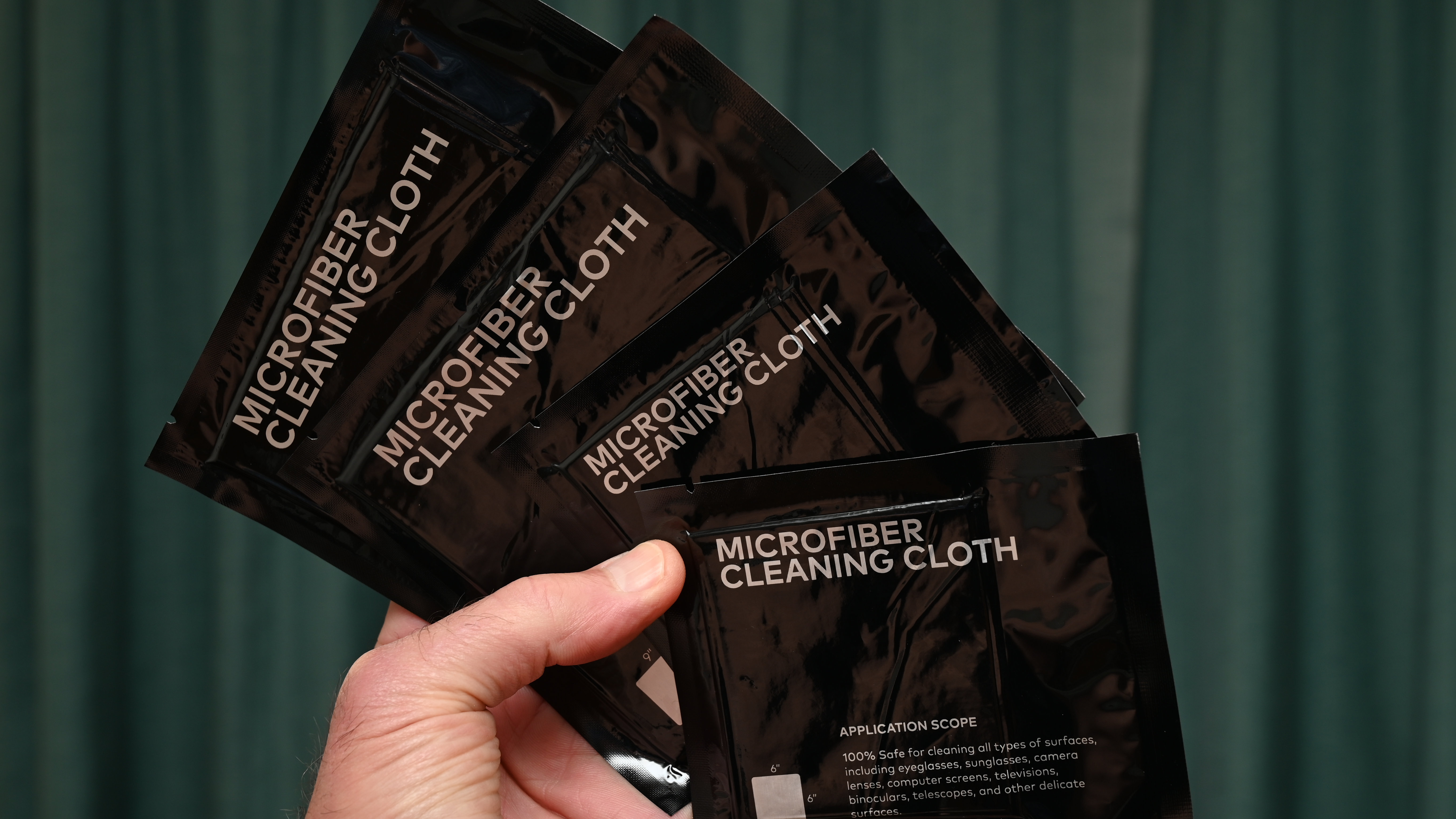
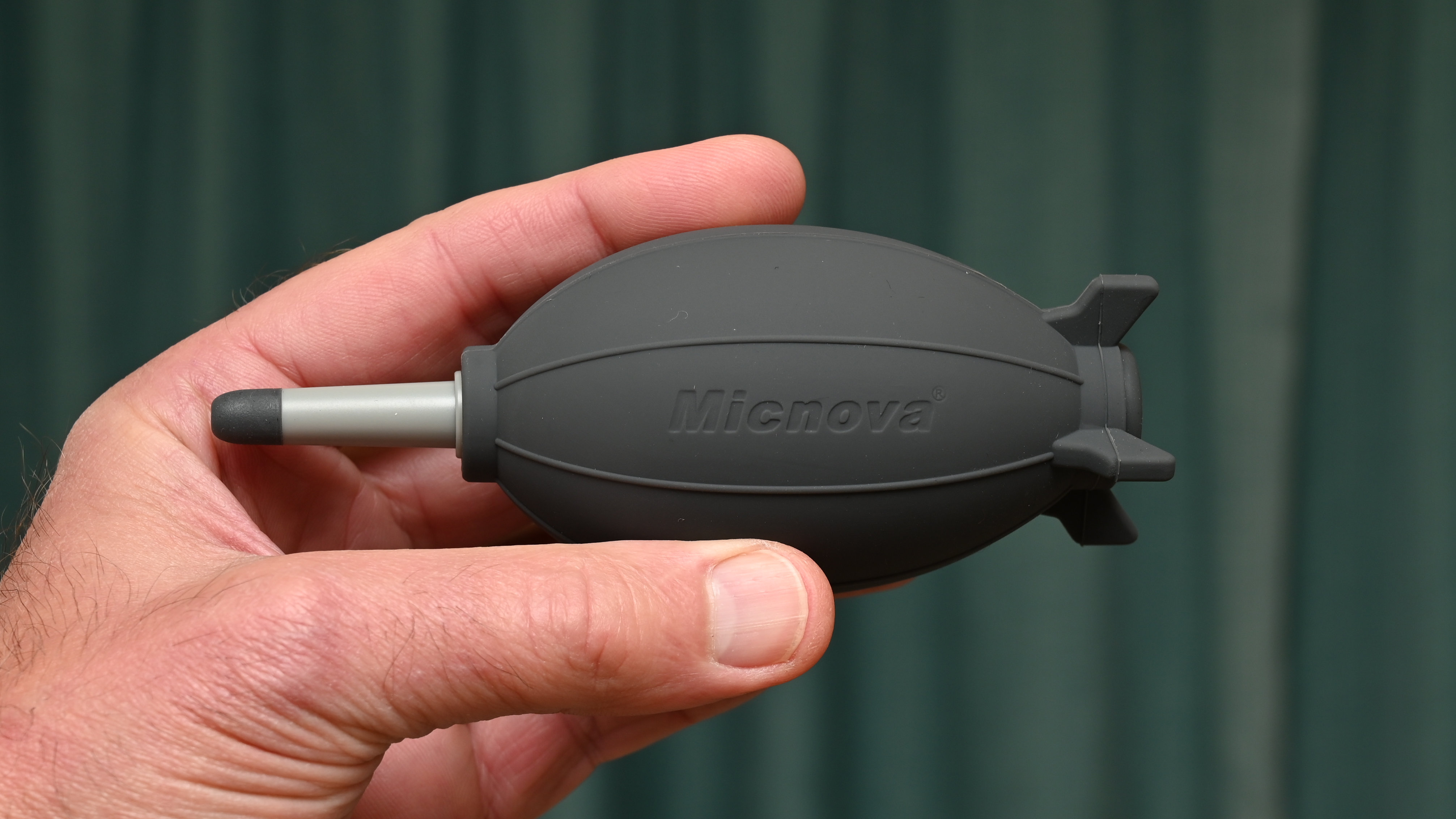
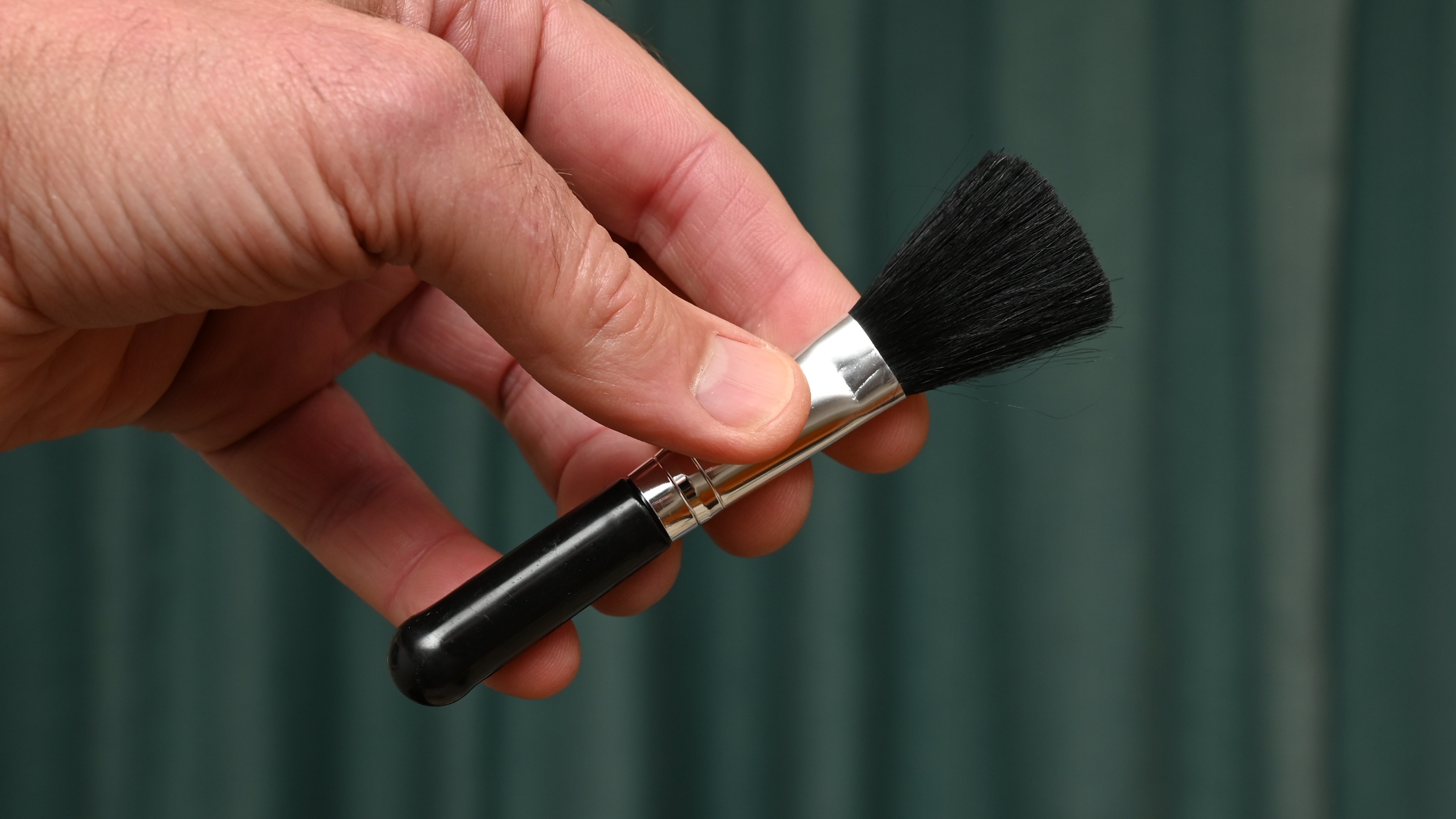
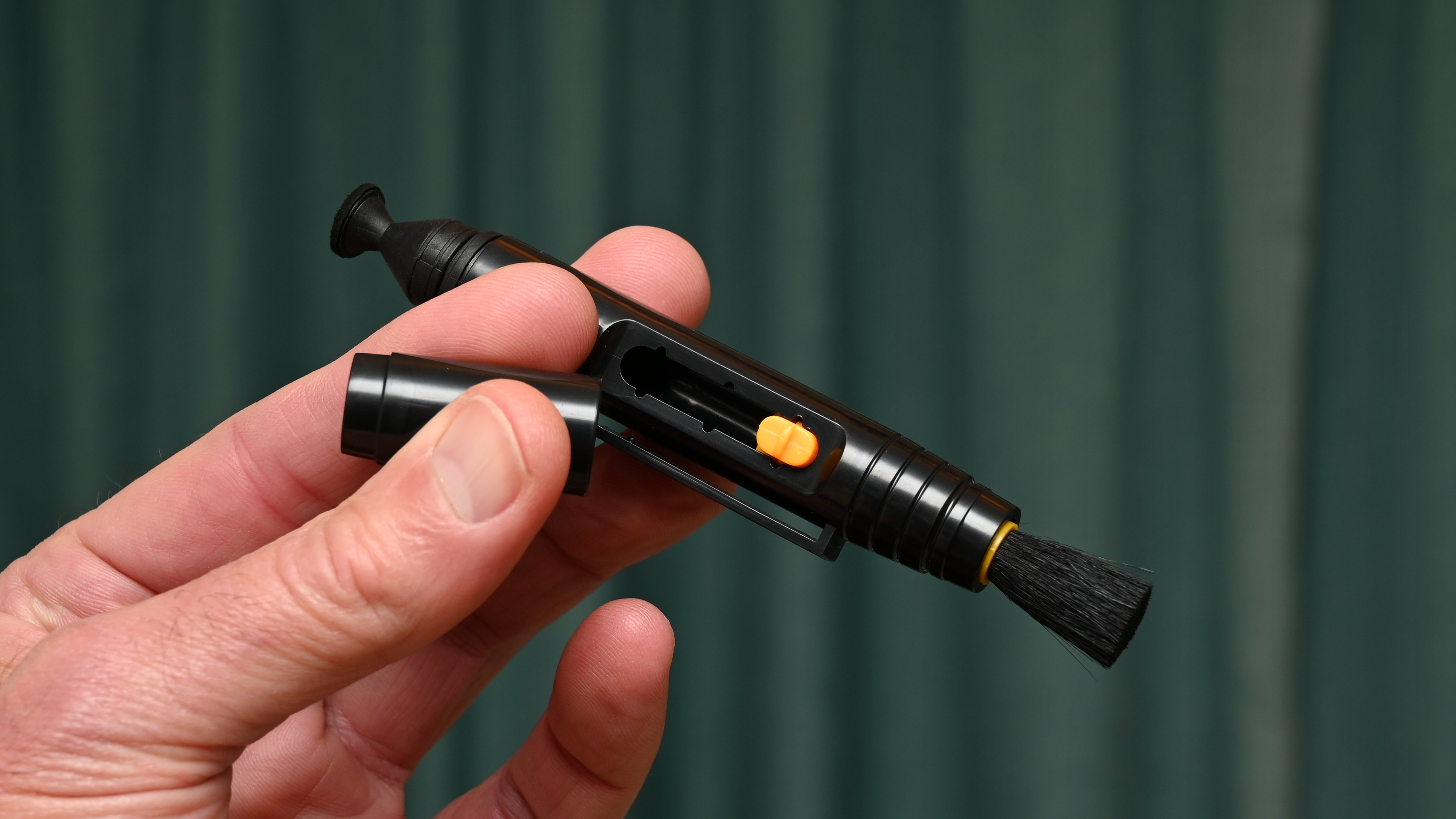
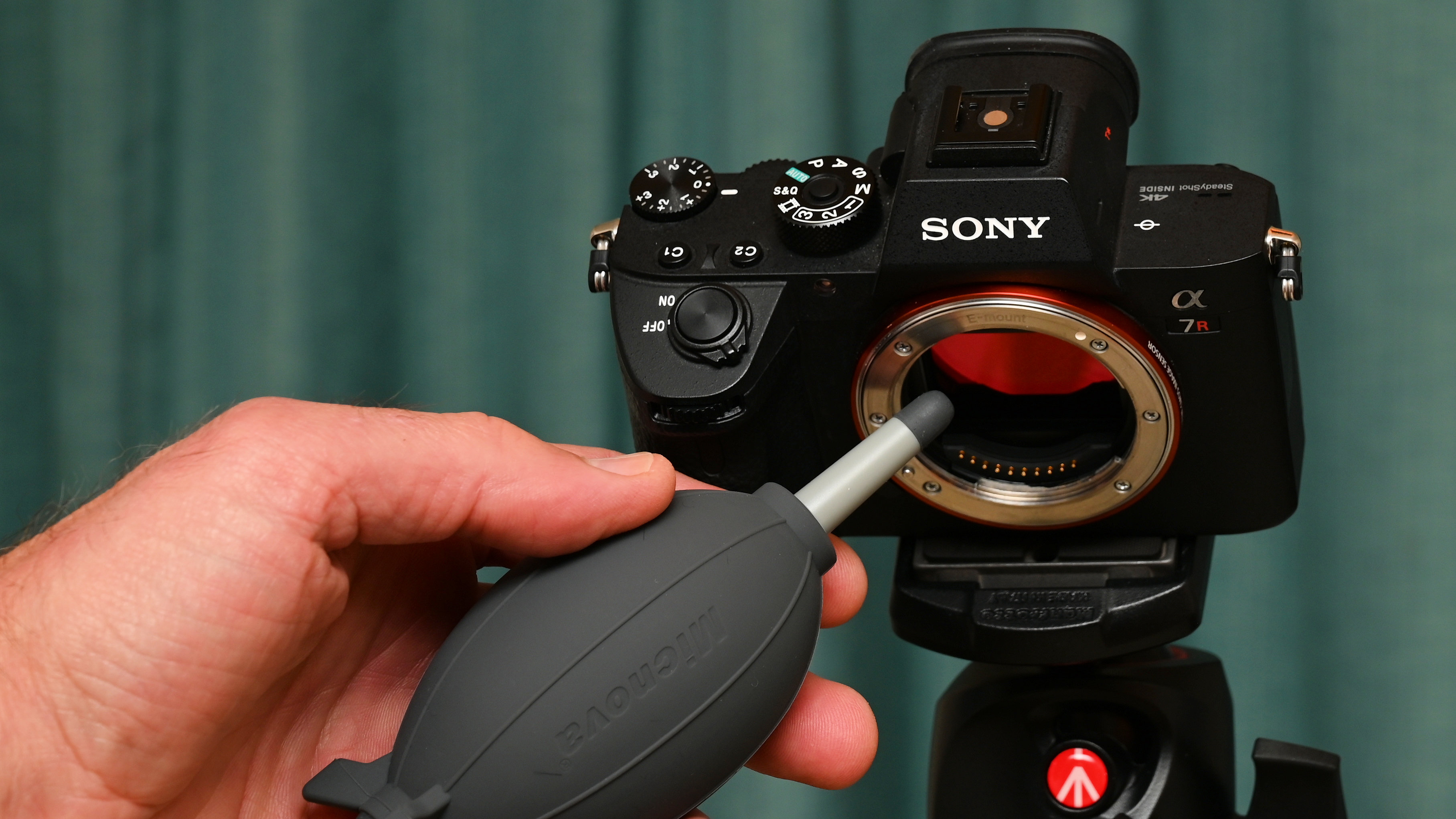
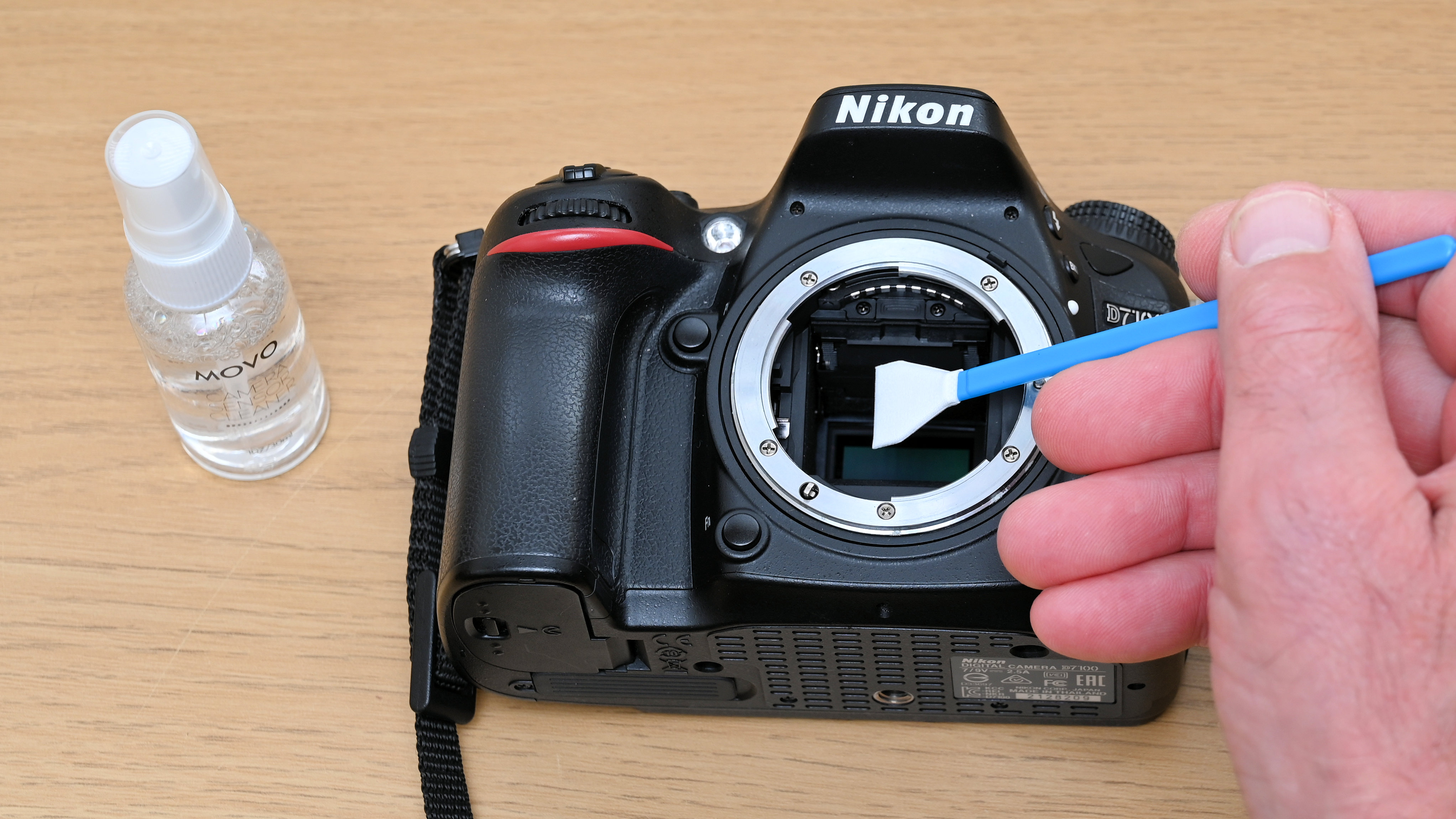
Features | There’s a lot packed in, and packed into a neat carrying case to boot. | ★★★★ |
Design | The components of this multi-function cleaning kit work well together. | ★★★★★ |
Performance | Performance is good overall but not quite a match for the best wet swabbing solutions. | ★★★★ |
Value | So long as you have an APS-C format camera, you get a lot for your money. | ★★★★★ |
Best value wet swab cleaning kit
6. Photographic Solutions Sensor Cleaning Swab Kit
Our expert review:
Specifications
Reasons to buy
Reasons to avoid
✅ You want a wet swabbing kit from a manufacturer with a particularly long and well-trusted heritage.
✅ You need to shift tough stains and marks from your image sensor that an air blower and dry swabbing won’t achieve on their own.
❌ You feel unconfident about the wet swapping process and would rather have your image sensor professionally cleaned.
❌ You’d rather tackle sensor dust progressively, using a dry swabbing process after an air blower, rather than going straight to wet swabbing.
Like the Canadian VisibleDust company, the USA-based Photographic Solutions outfit has been in the camera cleaning business a long time, earning an excellent reputation along the way. A range of products is available, including an Orbit HEPA Blower for filtered dust-free and moisture-free air output (as used on the International Space Station, no less), lint-free E-Wipes and Pec*Pads, and of course, sensor cleaning swabs and fluid.
The range of swabs covers different sizes including medium format, full-frame, APS-C, and even APS-H (remember that?). I went for the ‘Type 3’ 24mm Sensor Cleaning Swab Kit, which includes six full-frame sensor-sized swabs and a bottle of Eclipse cleaning fluid. The fluid is guaranteed safe to use on CCD and CMOS sensors, advertised to dry instantly with no streaks nor residue. It’s engineered to work in harmony with the Pec*Pads and SensorSwab Ultra swabs, the latter featured in the kit I’m testing. An alternative liquid is also available, by the name of Aeroclipse, which has all the same advantages but is also non-flammable and TSA-approved as travel-safe.
The swabs have a nicely flexible handle that enables me to maintain a firm (but not too firm) pressure while swabbing the sensor. The business end is made from double-layer microfiber cloth, the inner layer locking in liquid and the outer with advanced stain-cleaning properties. The swabs are designed to not shed any fibers, have welded seams, and are individually packed in ‘clean room’ conditions.
I found the performance of the Photographic Solutions Sensor Cleaning Swab Kit to be excellent. After using an air blower to remove any loose dust, the combination of the swabs and liquid gave me a really clean image sensor, living up to their promise of safely removing dust, dirt, and oil/water-based smudges and smears.
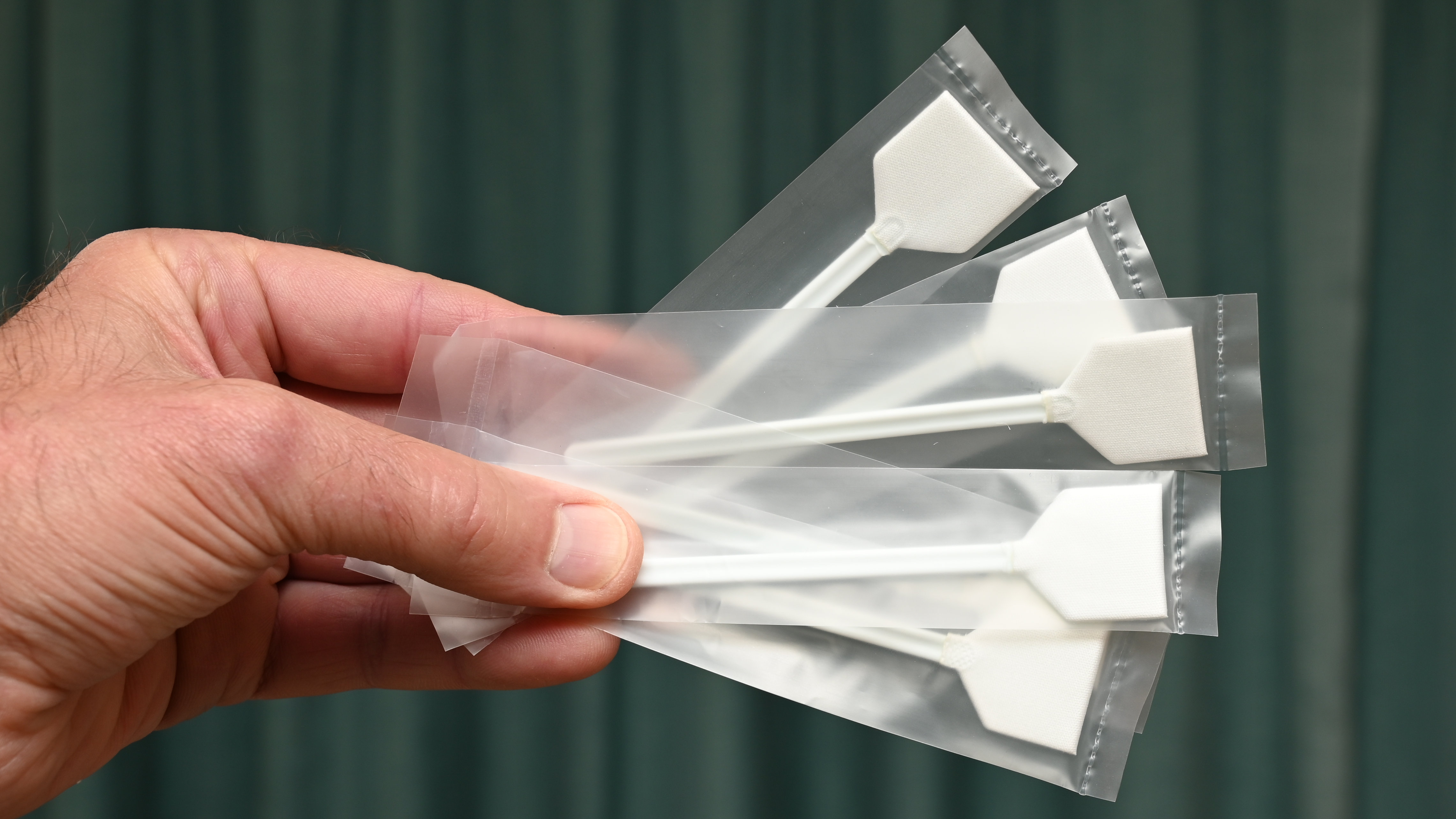

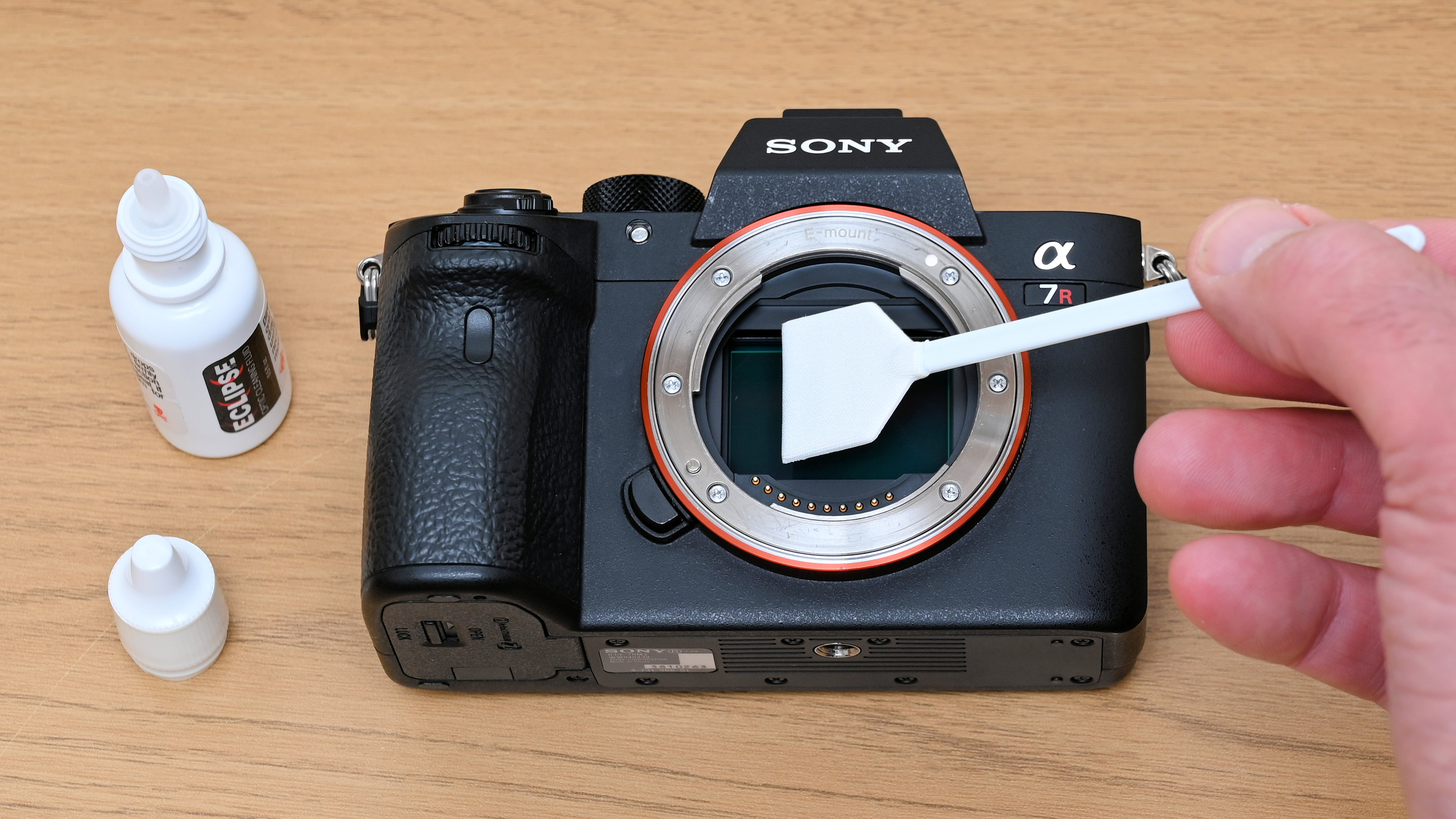
Features | The swabs are of good quality and available in a range of different sizes. | ★★★★ |
Design | The swabs have a tactile feel with good flexibility and the liquid is easy to use. | ★★★★★ |
Performance | The cleaning liquid and swabs work well together to shift the toughest grime. | ★★★★★ |
Value | It’s great value for a top-performance kit, manufactured in the USA. | ★★★★★ |
Sensor cleaning results
This gallery of four photos features a blank white wall. They were taken with our Sony A7R III camera, which the Digital Camera World team use extensively for testing scores of different lenses and other equipment, as well as on wide-ranging photo shoots. Suffice it to say, lenses attached to the camera are changed countless times. The series of four shots demonstrate dust spots and other contamination on the sensor in its initial state, then after cleaning with an air blower, followed by dry swabbing and finally wet swabbing. You’ll see the differences if you zoom in on the photos.

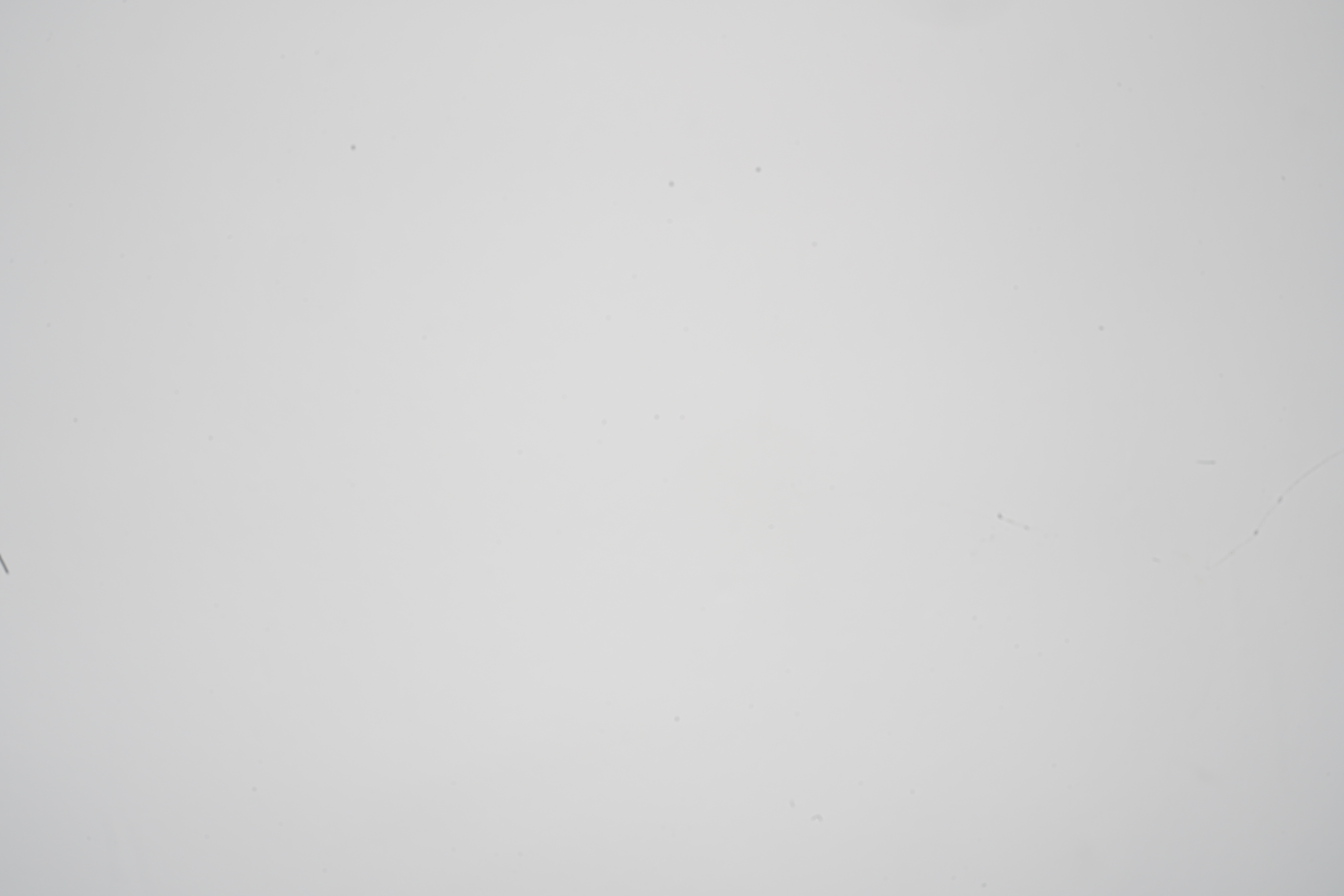


How to choose
1. Wet or dry?
Carefully using specially designed swabs and solution will remove most gunk from your sensor, while a simple air blower puffs dust away for a quick clean. It is good practice to do a dry clean with a blower, before moving onto a dry or wet clean with swabs.
2. The perfect view
A kit with a loupe and light will really help you see what and where needs cleaning. Some designs also enable you to clean while the loupe rests on the lens mount. See our guide to the best loupes for DIY kit options. If you buy a kit without a light, a headtorch is an excellent alternative, as it keeps your hands free.
3. Plan ahead
A basic blower will never run out of puff but, if you plump for a wet cleaning kit, the included swabs and solution will only go so far. Make sure that replacements are readily available and don’t cost a fortune.
4. Fit for purpose
Camera sensors are delicate devices, so only use swabs and solution specifically designed for cleaning imaging sensors – not just optical glass.
5. Get the right size
Swabs for dry or wet cleaning come in different sizes - get the right size for the sensor, so that you can clean the whole surface with one pass of the swab.
6. Less is more
Hurricane blowers may be safe for a sensor, but don’t be tempted to up the ante with a compressed air canister. Their high pressure and freezing propellant can cause serious damage!
How we test
At DCW, our team of photographic experts test a huge amount of photographic equipment, including cameras, lenses and accessories such as camera sensor cleaning kits. We test gear in real-world conditions as well as controlled lab settings, in order to assess how well it will perform in different shooting scenarios. For sensor cleaning kits, we test both how easy it is to use the kit, and how effective it is at removing dust and dirt from a camera sensor.
Find out more about how we test and review on Digital Camera World
The best camera deals, reviews, product advice, and unmissable photography news, direct to your inbox!
Matthew Richards is a photographer and journalist who has spent years using and reviewing all manner of photo gear. He is Digital Camera World's principal lens reviewer – and has tested more primes and zooms than most people have had hot dinners!
His expertise with equipment doesn’t end there, though. He is also an encyclopedia when it comes to all manner of cameras, camera holsters and bags, flashguns, tripods and heads, printers, papers and inks, and just about anything imaging-related.
In an earlier life he was a broadcast engineer at the BBC, as well as a former editor of PC Guide.
